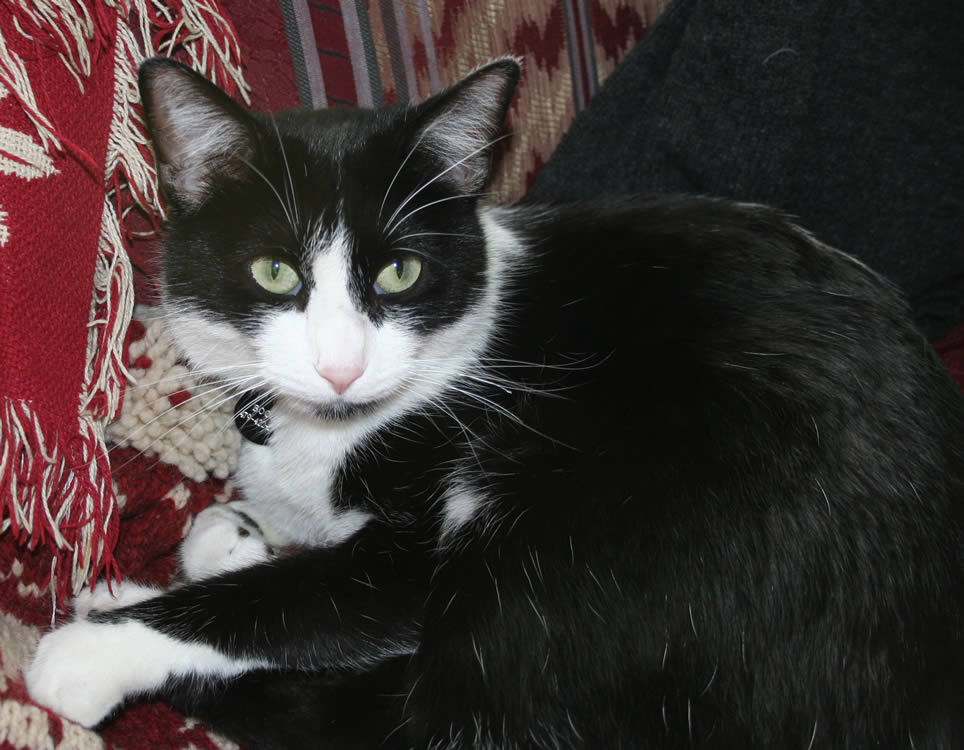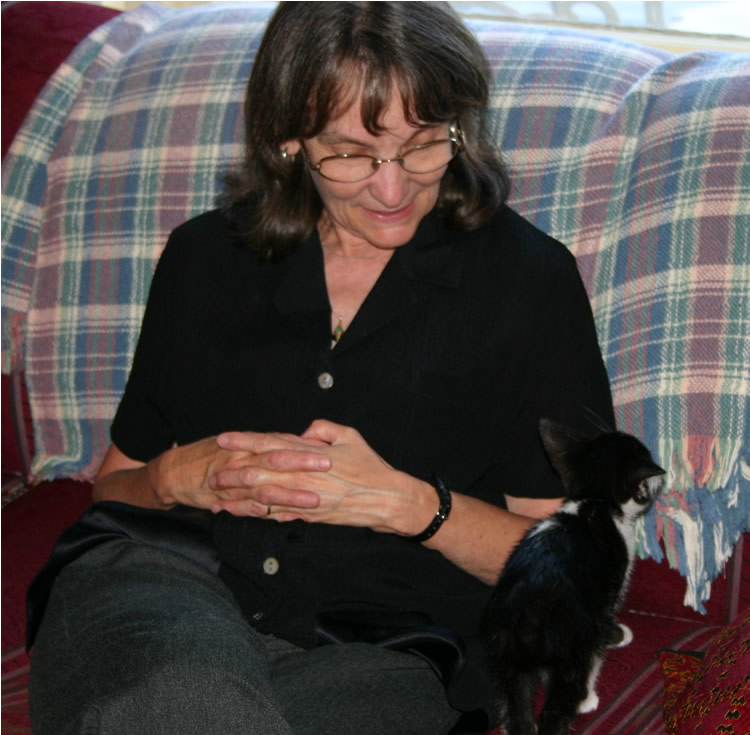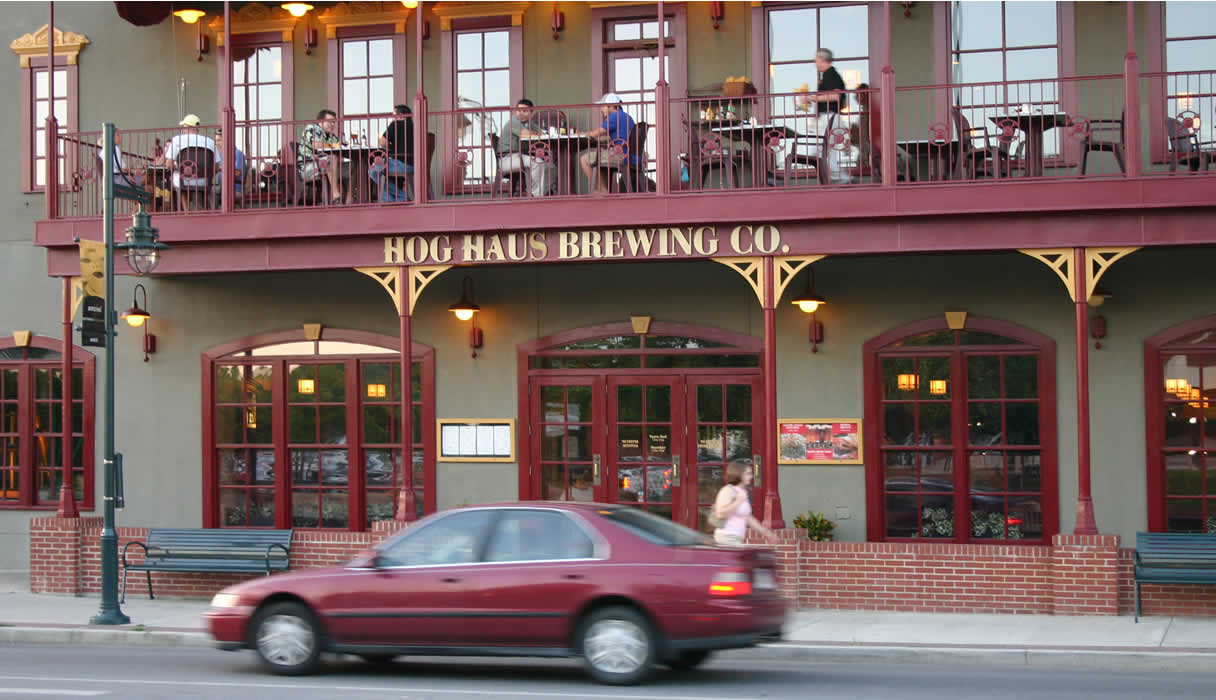
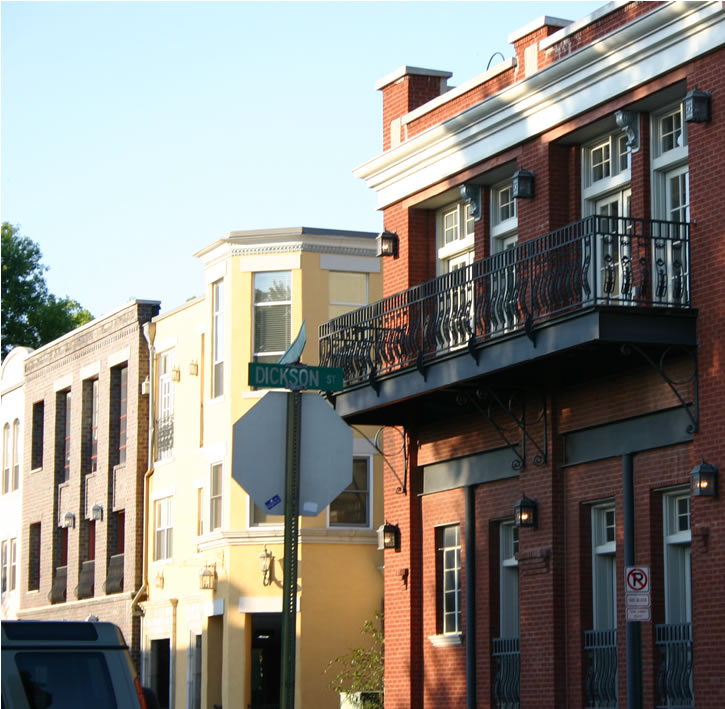
Fayetteville, Arkansas and environs
(2004 - 2010)
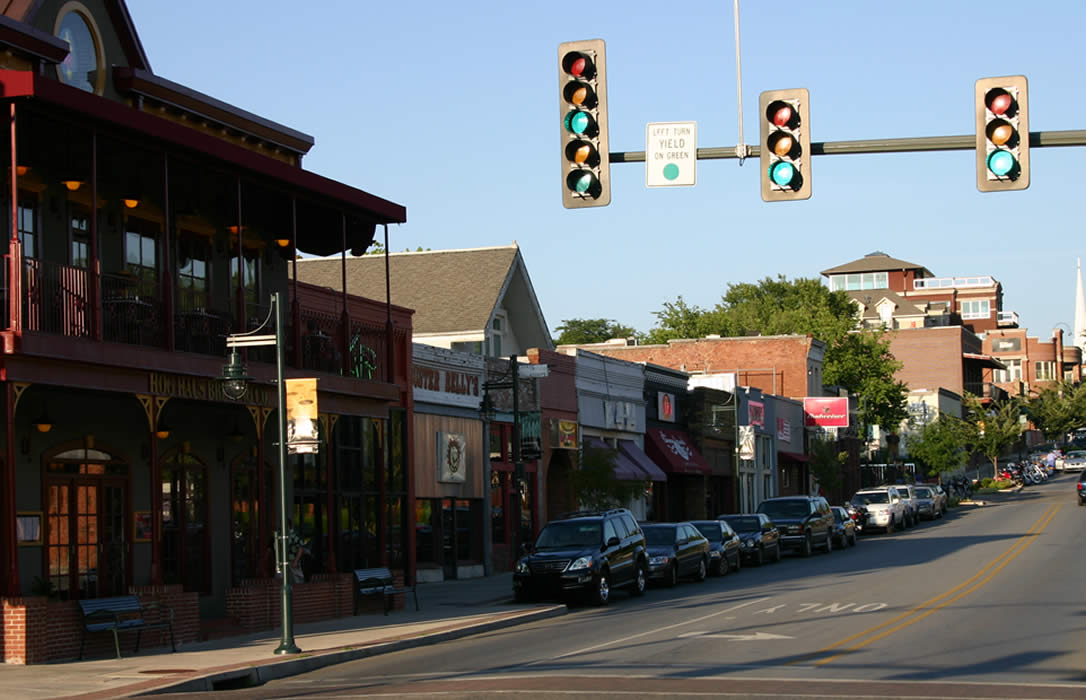
Fay Jones architecture information here.
Bikes, Blues, and BBQ information here.
Cat Pictures here.
We "discovered" Fayetteville when our son Rob went to the University of Arkansas for his MBA program. After he started there, we visited a couple of times and liked the small city/college town feel of the place. At around the same time, our time in California was coming to an end so we decided to move to Fayetteville. Gene was able to find a job that let him live there and Ellen soon found a job in the adjacent city, Springdale, at the public library there.
At that time, the "entertainment district" in Fayetteville consisted mostly of several blocks of Dickson Street. Not many years before the street, which ran from the University across the overgrown vacant lots along the railroad tracks to College Avenue, the "main drag" through town, had consisted of several seedy bars in the middle of the stretch from the University end to the curches on the other end. The bars,which catered to students and locals, contributed to the street's reputation among collete students in the region. By 2004, the area had been partially gentrified, with the Walton Performing Arts Center anchoring the renovations, and the bars and restaurants mostly going upscale or just going away. The gentrification continued through our time there, with the constuction or conversion of existing buildings to condos. Not for the students, but more for part time use by Razorback fans attending games at the campus.


Even the old train depot ended up remodeled and became a coffee shop/cafe/bakery. The local bank opened a branch office in a restored passenger coach car. And the condos keep on coming. So it goes.


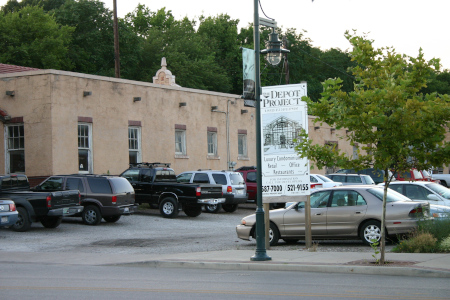
Fortunately, there were a few hold-overs from former times. George's Majestic Lounge remained a fine venue for local and visiting bands of various genres. A good place to get hot and sweaty while dancing and avoiding getting windmilled by local enthusiasts. The Gypsy was another, and "Jose's" was as close to a biker bar as the city might support.

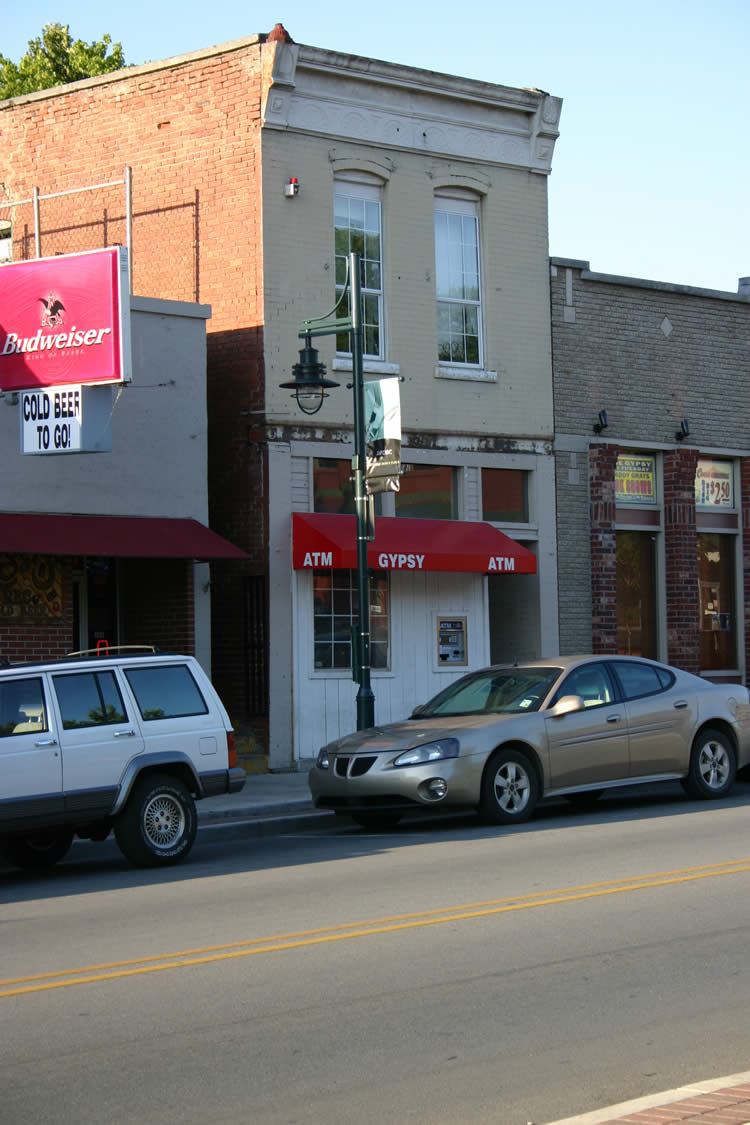
And then there is the Dickson Street Bookstore. One of the top 5 bookstores in the entire country. It fills several connected structures on the corner of Dickson Street and North School Avenue. Donald and Charles were family to all the booklovers in town and have bought and sold books there and by mail for years. The shelves reached to the ceiling and groaned with books of all types. Just the smell of the place was good for your brain.
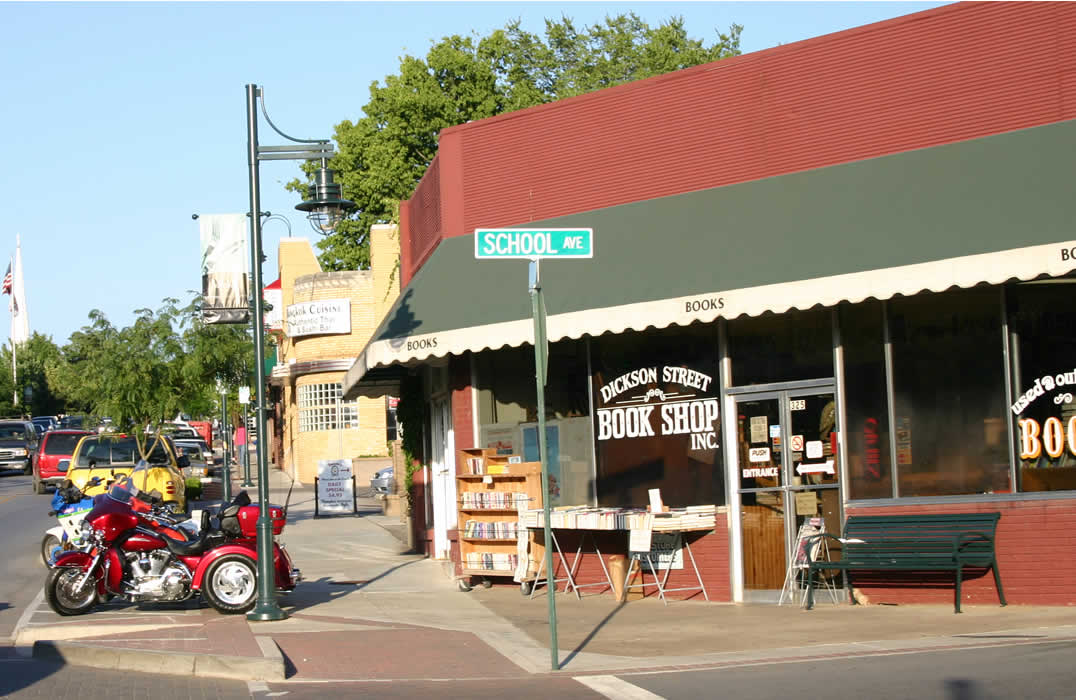
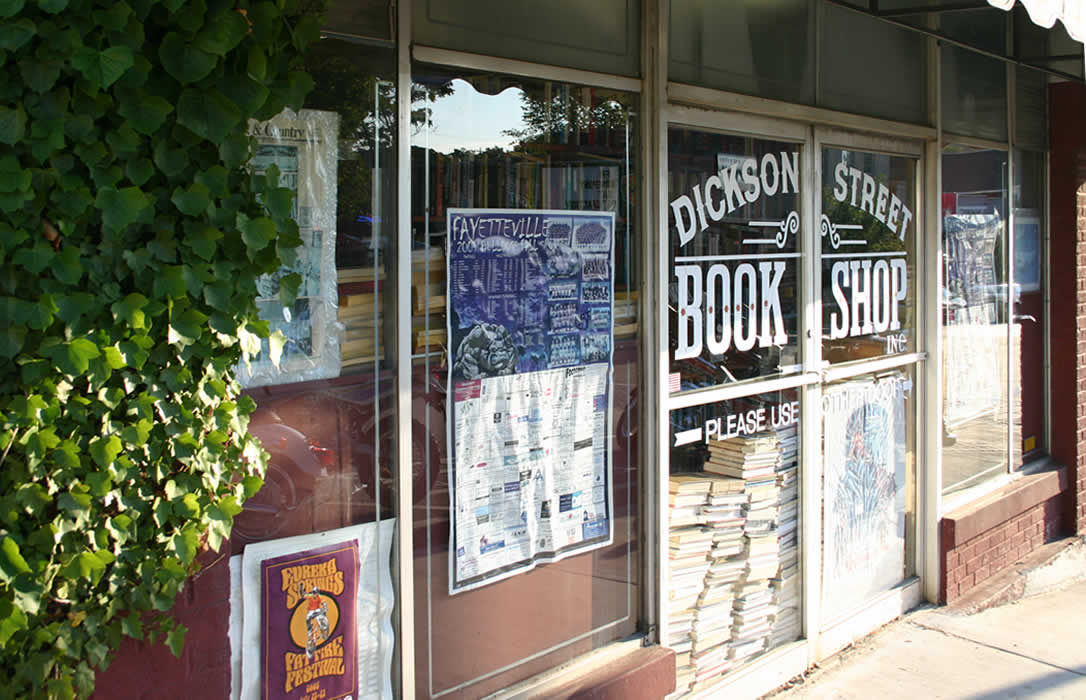
Fayetteville also had a town "square" several blocks from Dickson Street. It had formerly been the commercial center of town, with department stores, shops, and banks around the sides, and a lovely post office filling the center. By the time we moved there, the post office was long closed, the stores had moved to the malls, and only one bank remained. Most of the storefronts were empty or re-purposed, but over the years we were there, the square recovered, although the old post office seemed cursed, as one restaurant after another failed in the location.

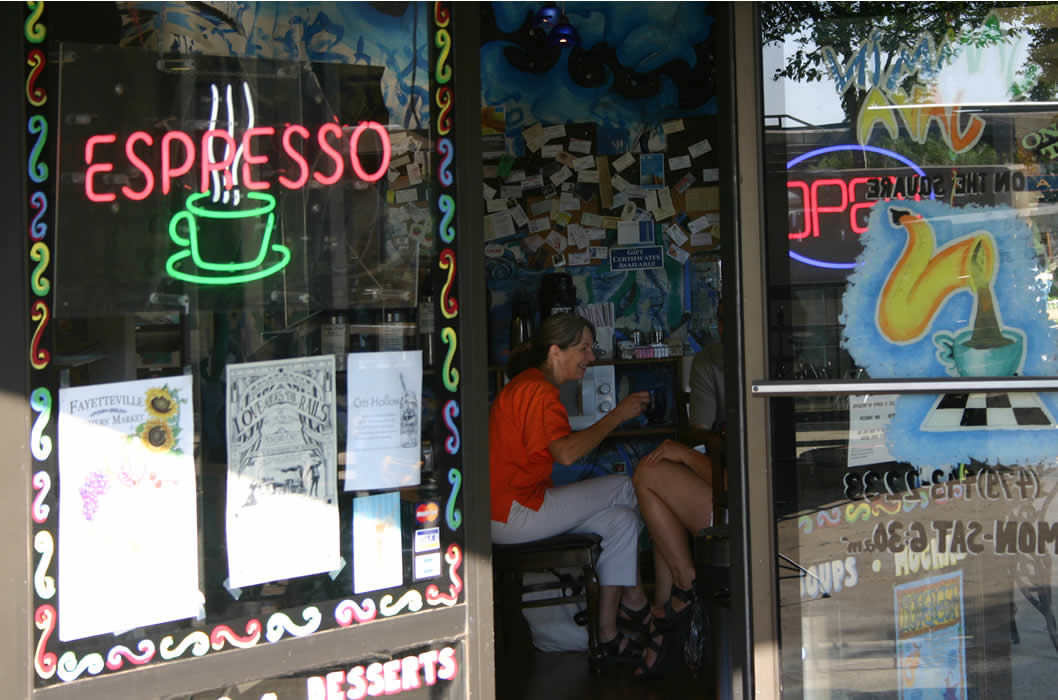
The Fayetteville Farmers' Market bloomed Saturdays in season. It was a good market, with plenty of fresh produce, meats, flowers, and a modicum of crafts. One of the outstanding businesses there was "Gibson Baskets" a third generation traditional ash splint basket making family. Around the time we left, they had been forced to take full time jobs, as the basketry could no longer provide a livilhood due largely to competition from cheap baskets made in Asia, mostly China, and changing taste. We still have and use several Gibson baskets, which can last a lifetime.
Here are some photos from the Farmers' Market.
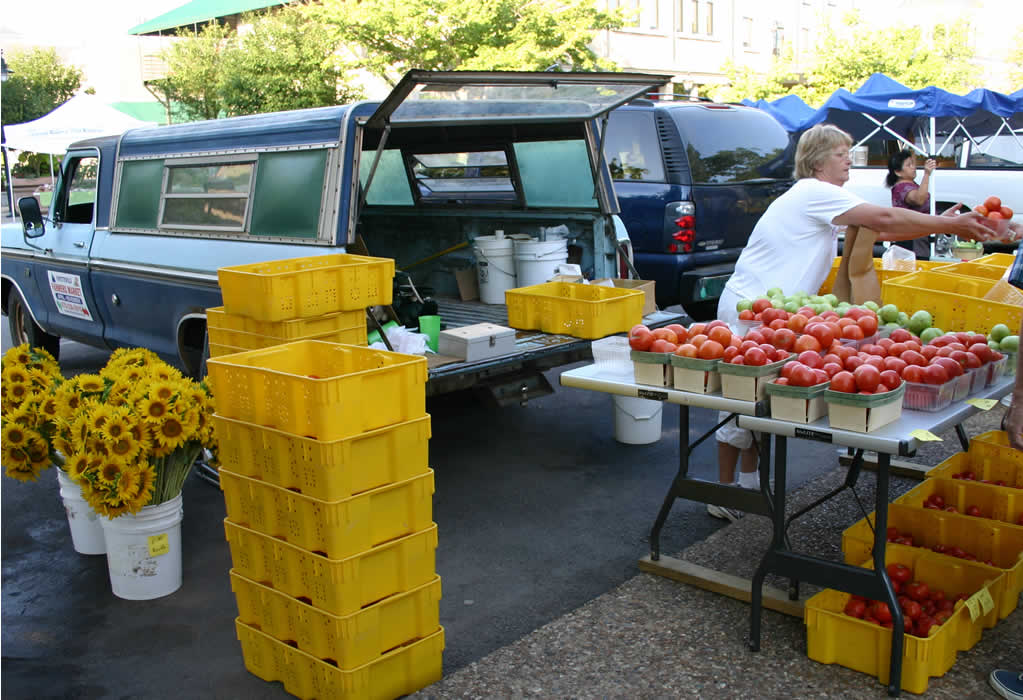
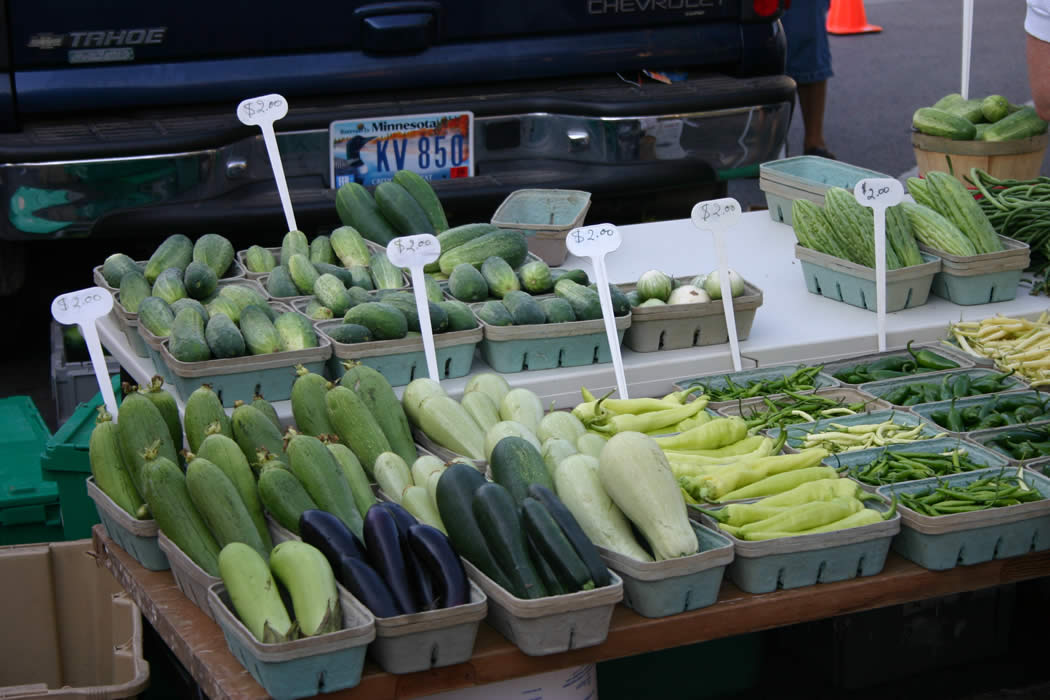
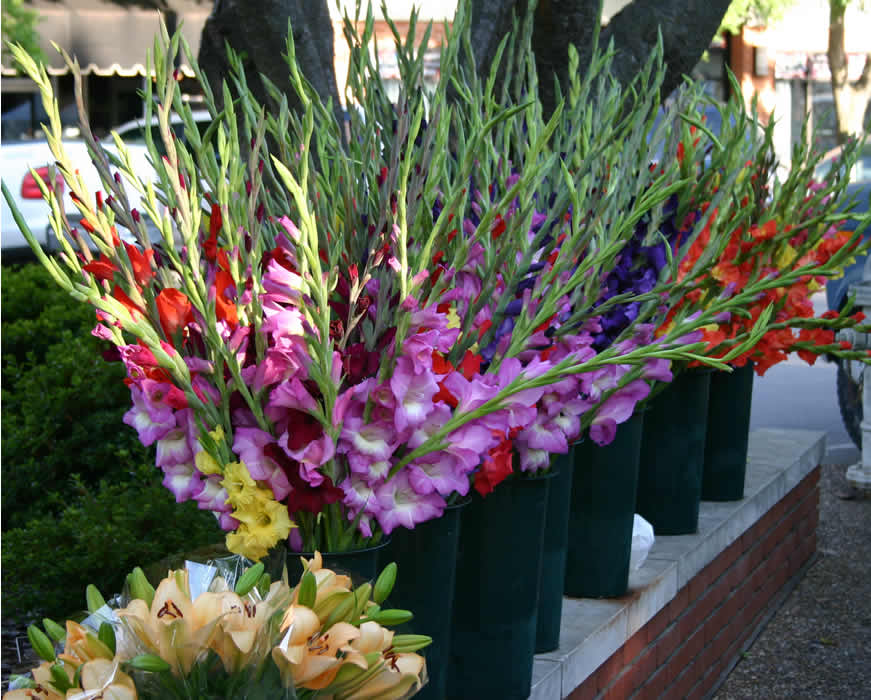
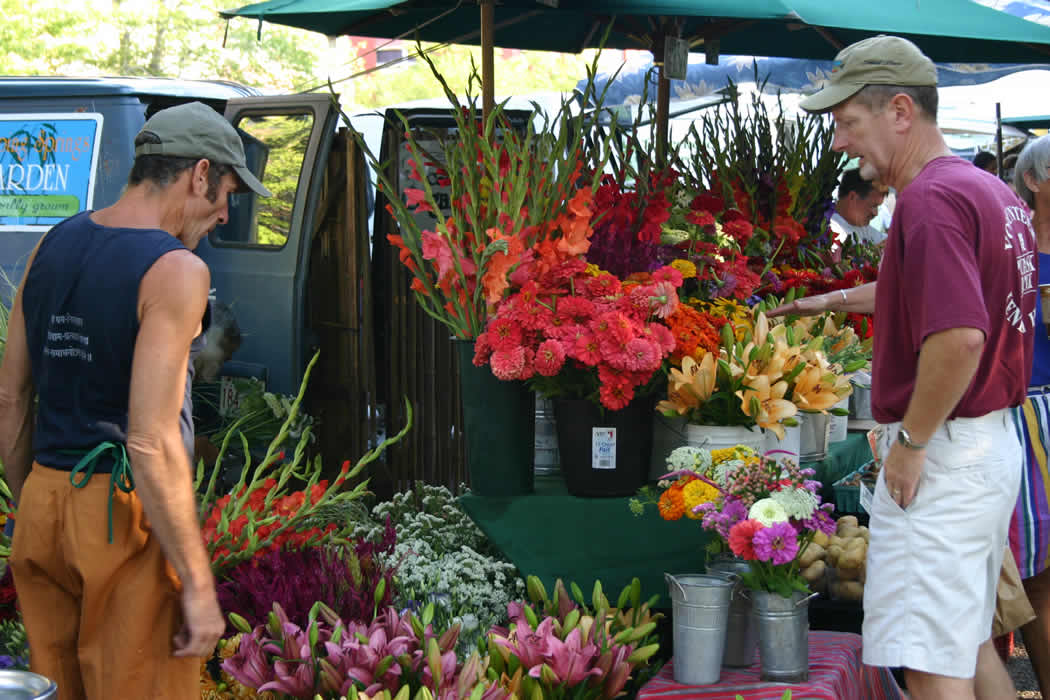
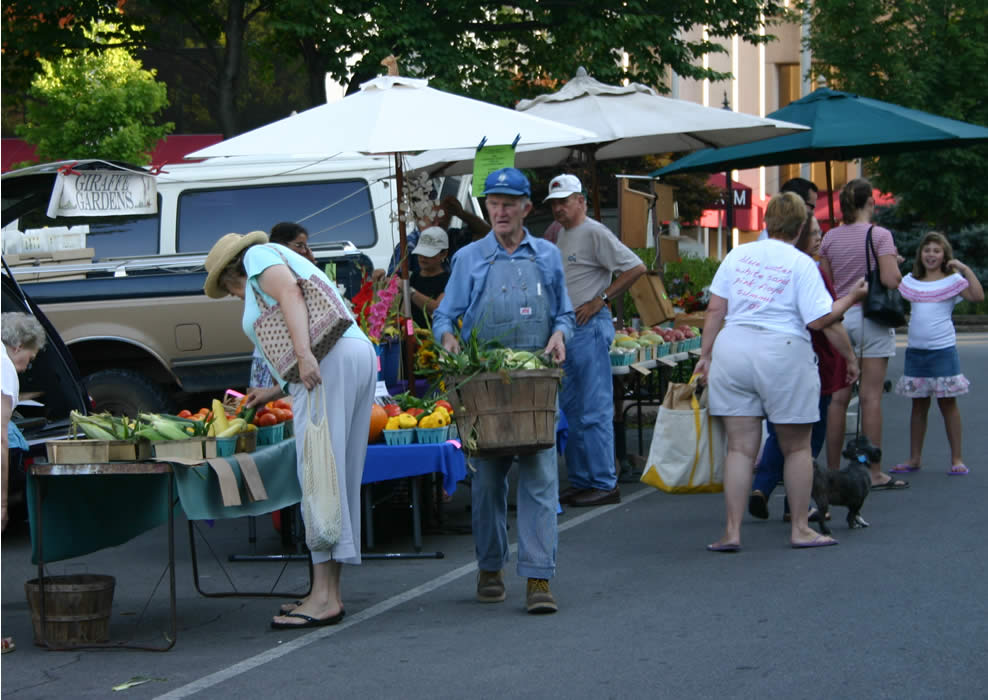

Another great thing about the square was "Hugo's", a small restaurant located in the basement of a building
about half a block from the square on Block Street. Hugo's is a classic, serving great burgers and greasy fries,
and a few specialty dishes. They had a pretty good version of a grilled chicken po-boy style sandwhich that
made me miss New Orleans even more.
There weren't a lot of great restaurants in Fayetteville at first, but things were definitely improving by the
time we left. But more so in Springdale, Bentonville, and Rogers, where more diverse populations supported a more
diverse restaurant scene.
One dramatic attraction in the square is the "Peace Fountain", a large bronze fountain sculpture by Hank
Kaminsky, a scultor and long time resident of Fayetteville. Hank mostly worked in sand cast bronze and have
multiple commissioned works on display in the state. The peace fountain is a huge sphere, which seemed to float
on the water of the fountain, which also flowed out the top of the sphere and down its surface. The surface
was mostly made up of the word "peace" in multiple languages. Children especially loved the work because of the water
and because it was so easy to turn the sphere.
Here is a photo of a small portion of the sphere with the water flowing over it.
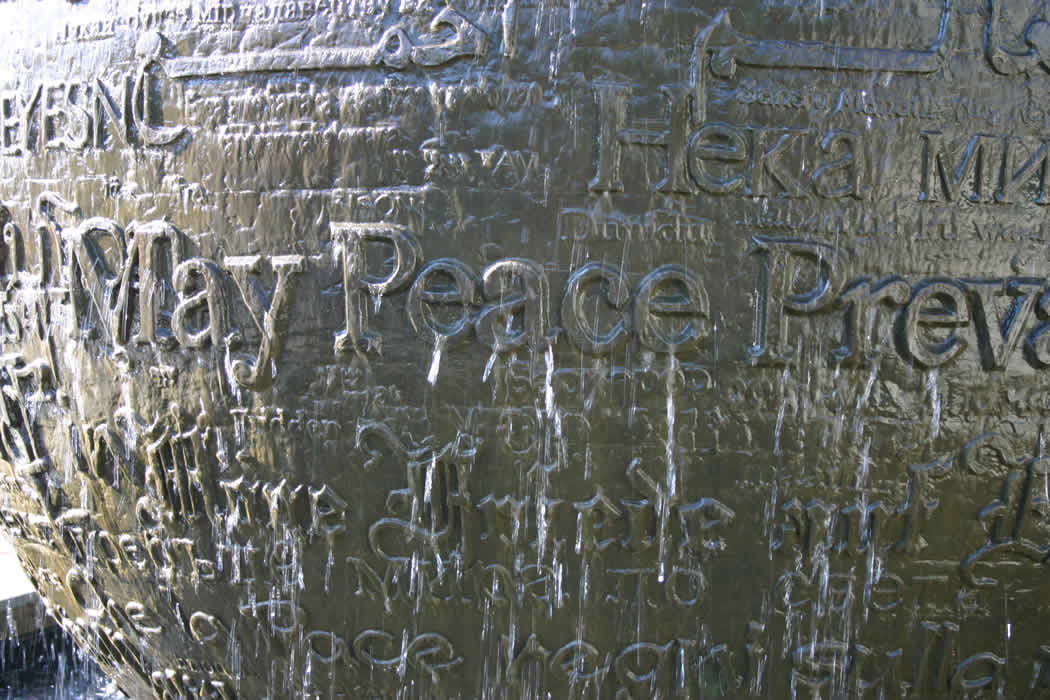
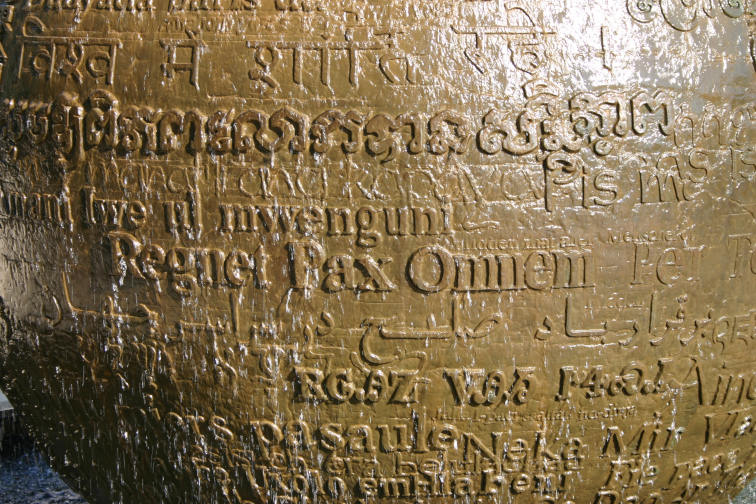
At first, we thought we would settle into Fayetteville and stay on there after retirement.
So we set about fixing up our house as if we would stay there forever, something we always seemed to do,
until the recent past, when we became renters. We bought a house on Mount Sequoyah, a hill on the other
side of College Avenue from the University and set about remodeling and upgrading it for our purposes.
We converted one of the bedrooms into a library, one basement garage into a woodshop, the other garage
into a ship modeling work shop. The rest of the basement was a separate living/bedroom/bath for guests. It
even had a fireplace!
The house had a large deck along the front, which we shared with the local songbirds and mosquitoes. Arkansas
is a great location for songbirds, and we set up bird feeders on the deck to feed them, and the squirrels, of
course. We had plenty of goldfinches and cardinals and for a short time, even a roadrunner. The roadrunner
would hang out around the bird feeder but the songbirds easily avoided the predator, whose black and white
speckled plumage stood out dramatically against the gray deck and white railing.
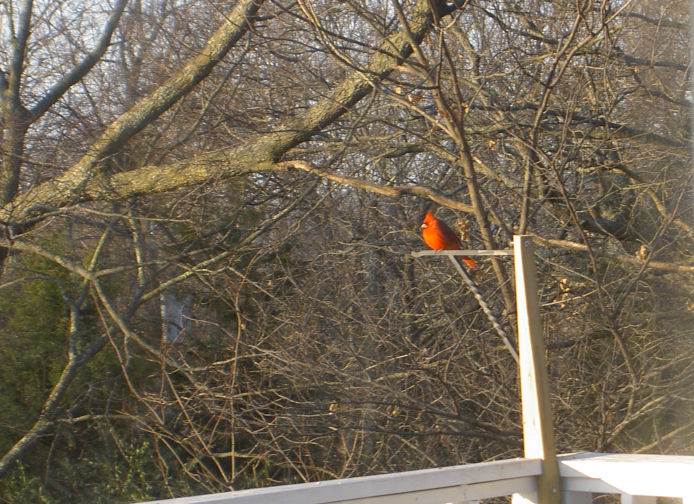
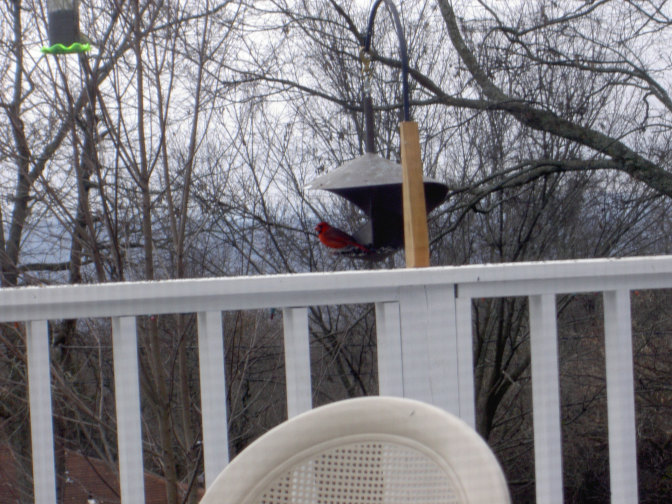
For a time, we had a visiting cardinal with a mutation that caused it to lack the red color in part of its plumage. A bit of research on the web turned up plenty of fascinating information on the genetic determinants of bird plumage color. In short, there are three regions of plumage separately genetically determined in most birds. In colorful songbirds such as goldfinches and cardinals, the bright yellow or red colors are actually made by enzymes in the feathers themselves from precursors in their food. If a bird lacks the enzyme, it will fail to develop the characteristic color. The enzymes are activated seasonally by hormones to enhance the color in males in the breeding season.
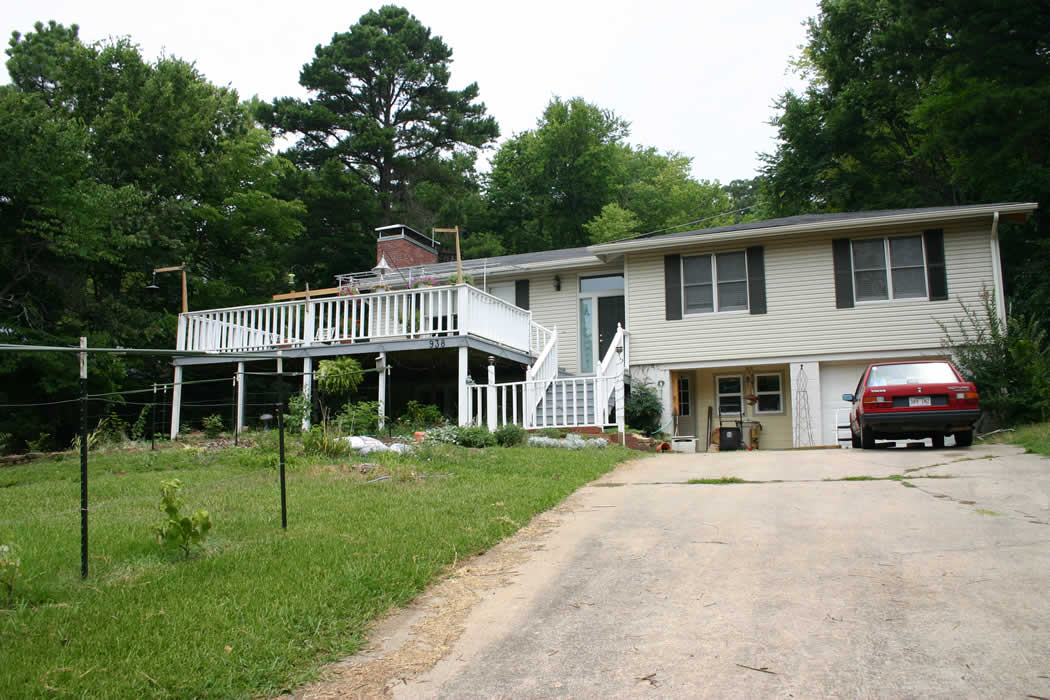
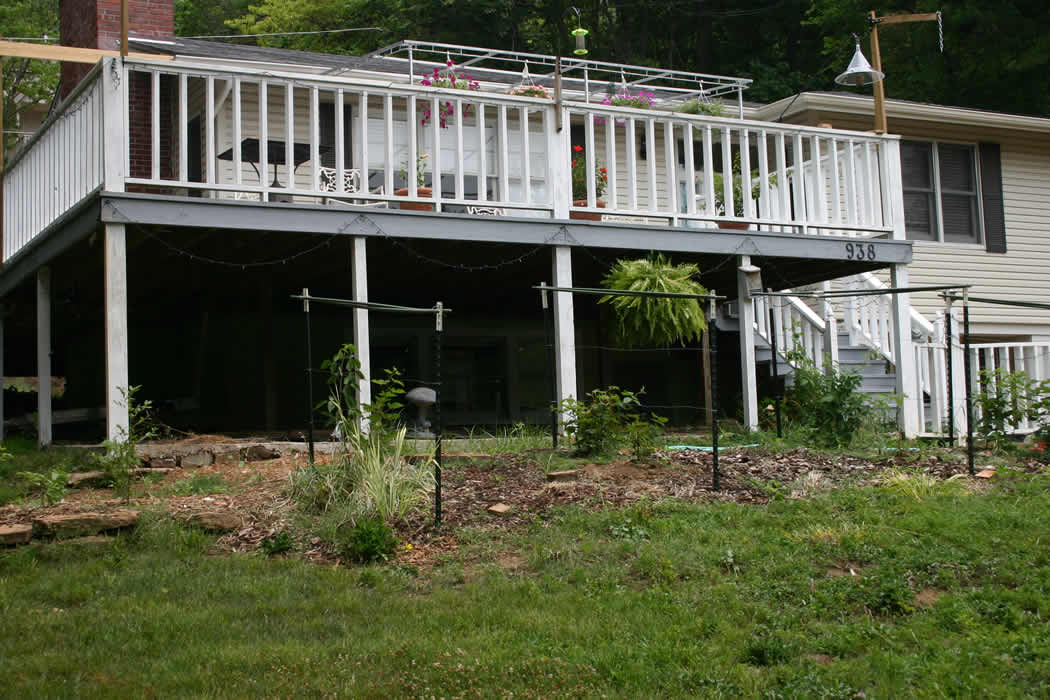
Here are some photos of the inside of the house, including the library, the workshops, the living room, and shots of the deck and the terraces in the back of the house.
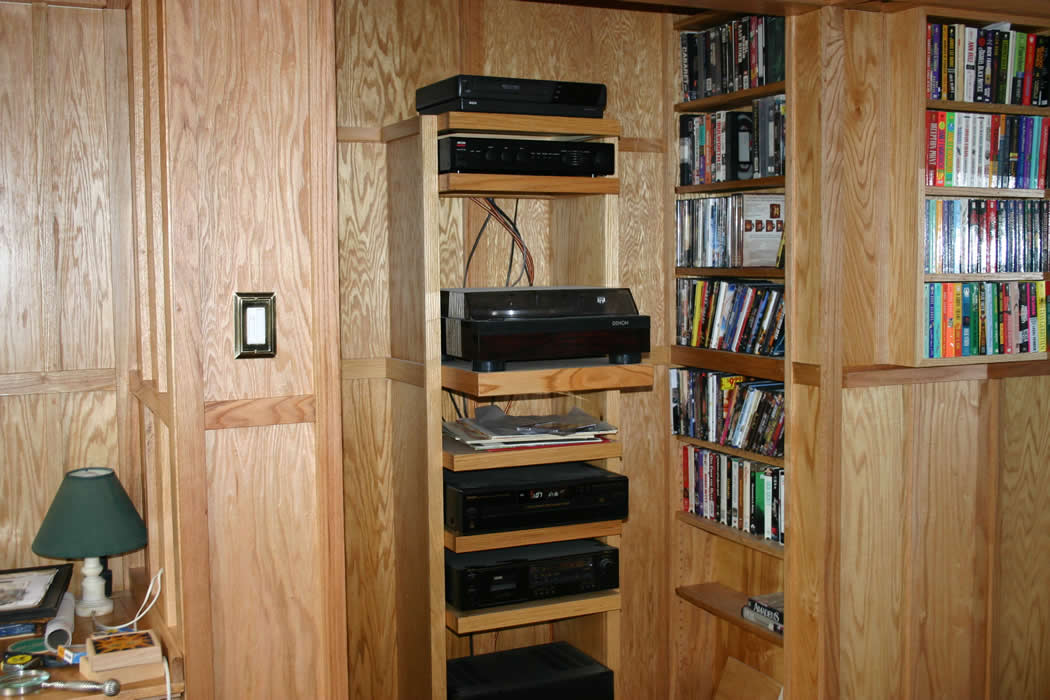


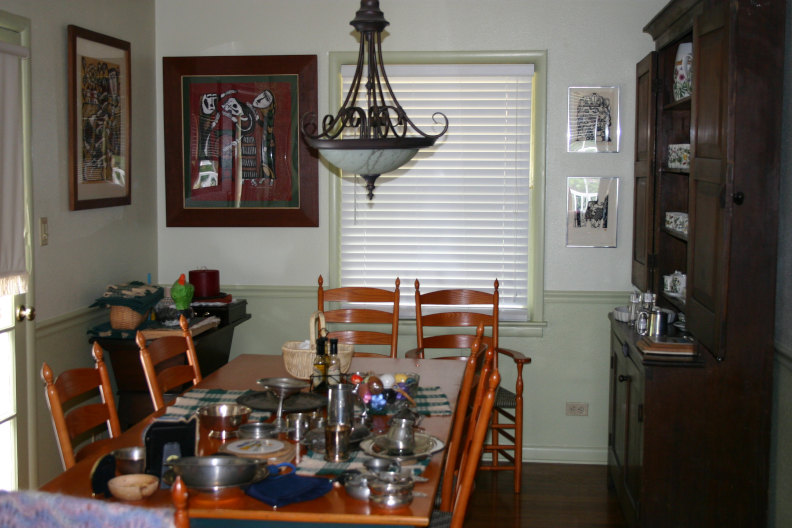
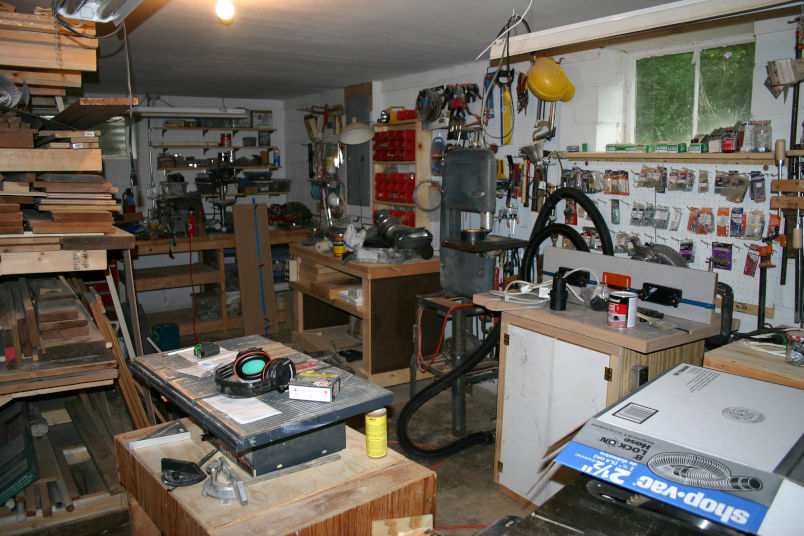

After several years in Fayetteville, we even bought another small home there to fix up and rent. And maybe
become a smaller home for us, if ever we down-sized. It was closer to town, just half a block off College
Avenue, and was a bit of a fixer-upper,so we fixed it up. It was just about 1,000 square feet in all and had
been a two-family home for much of its life. There were therefore already two bathrooms, one for each side, and
a single bedroom on each side. One kitchen had been removed when it was converted to a single house, and
that part of the house made a utility room for the furnace, water heater, washer and dryer.
It had been a rental for a few years and not maintained very well. Upon removal of some pretty disgusting
layers of carpet and other floor covering of uncertain origin, we found lovely oak floors. The house had probably
been owner-built in the 1920s or 30s by people working on a budget. The floors were made of oak "shorts", the cut
off ends of oak floor boards, or the middle portions removed because of knots or other figured grain. So the
pieces were less than two feet each, but full of knots and interesting grain patterns. A lovely floor, rivaling many
expensive parquet floors, when refinished. (see below)
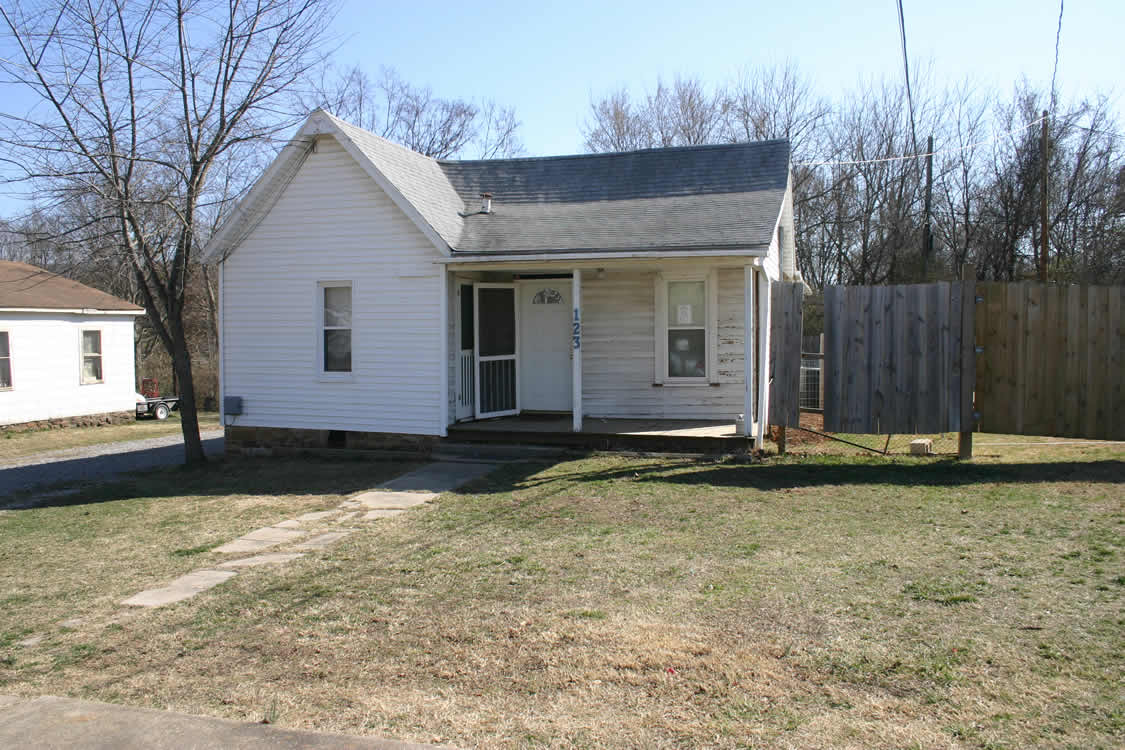

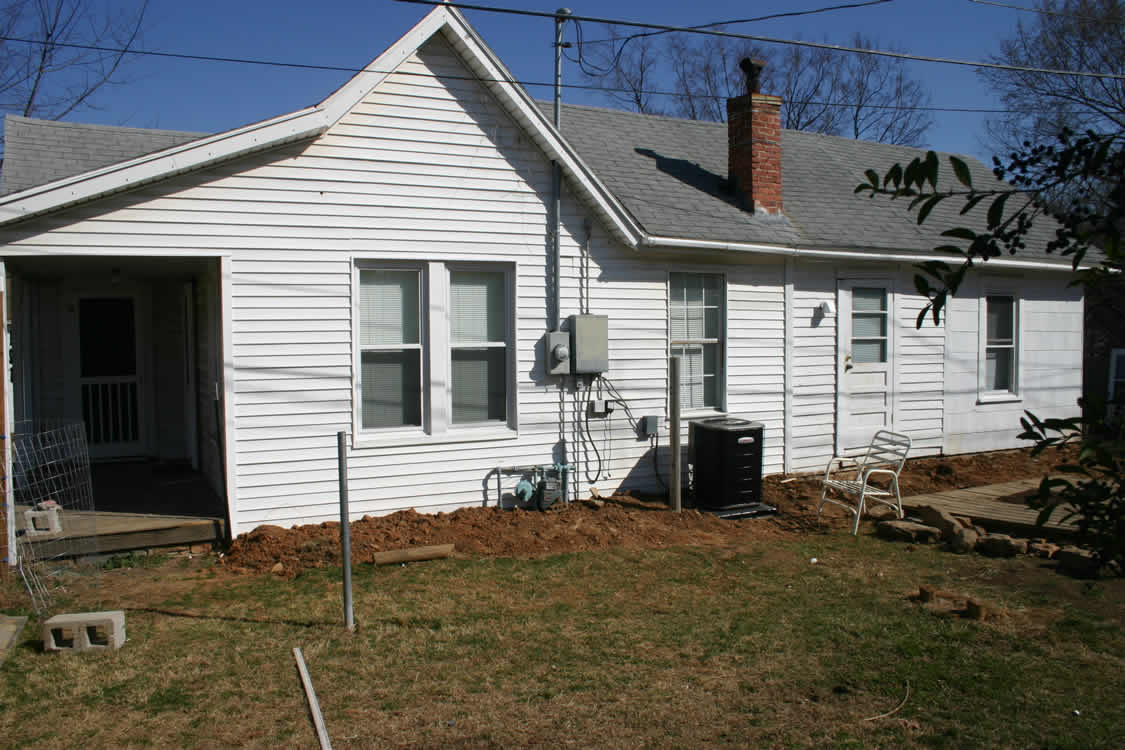
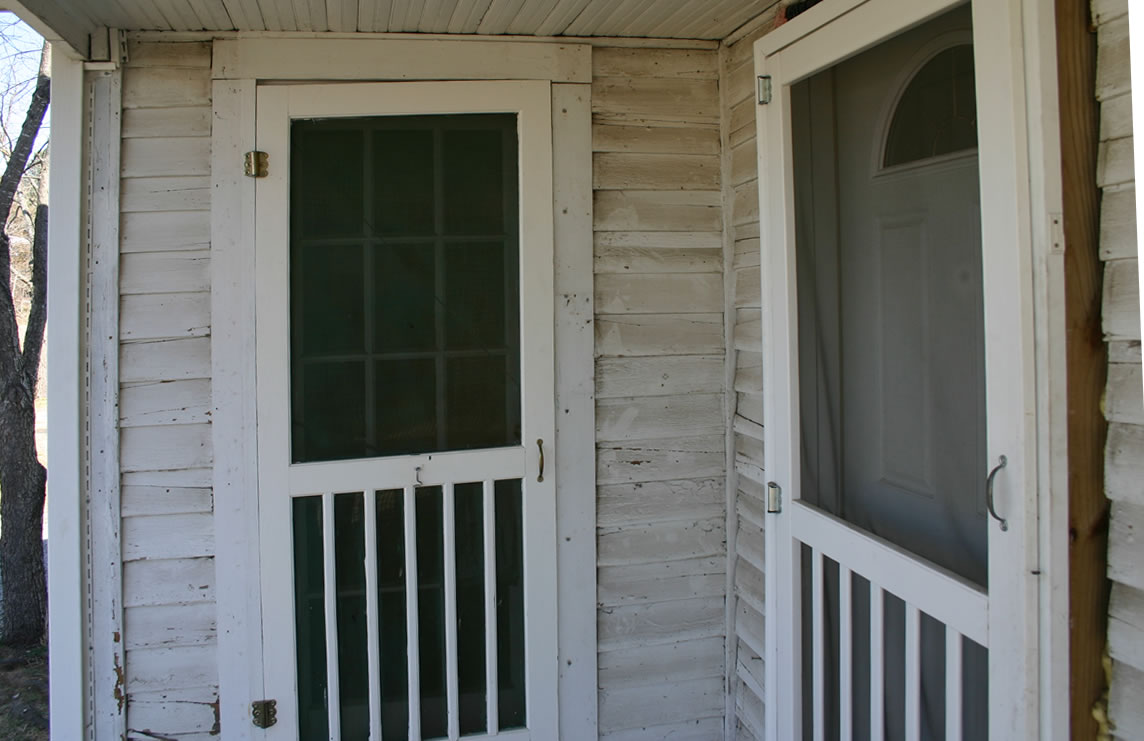
We got the place fixed up around the time Rob finished his MBA thesis and decided to stay in Fayetteville and see how he could do as a free lance artist teaching part time. His girlfriend at the time had another year to go in her MBA program, which may have influenced the decision. So we rented the place to Rob, and were paid in paintings. A good deal for both parties, but perhaps better for us.
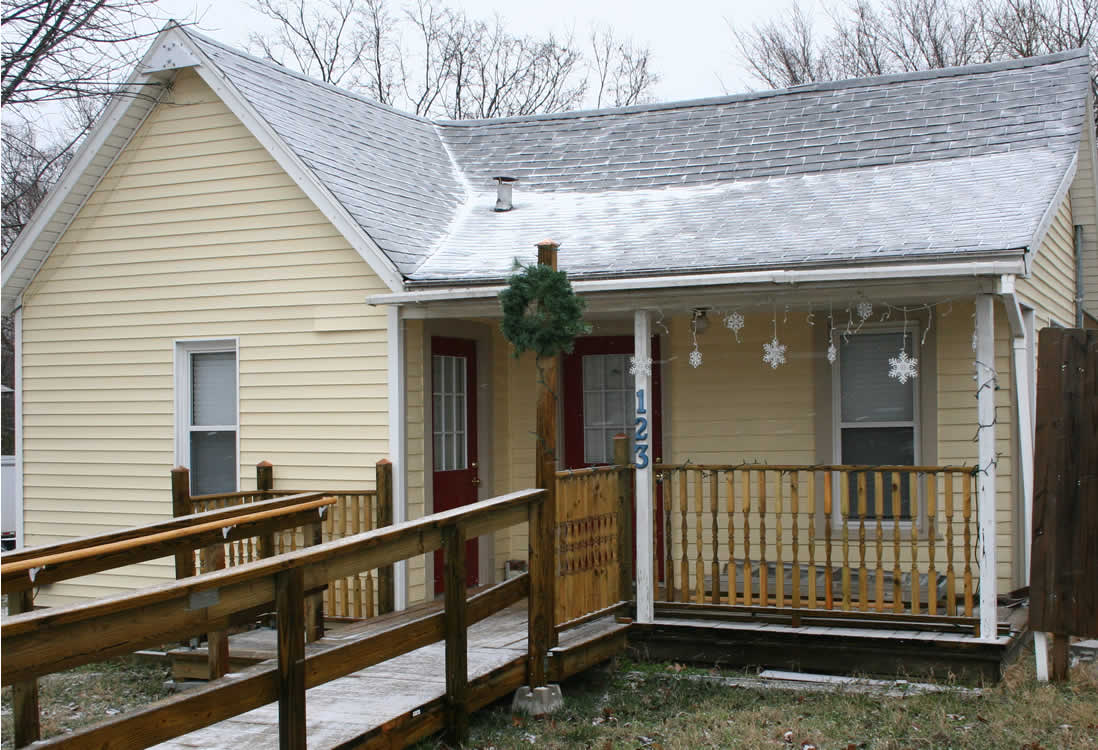

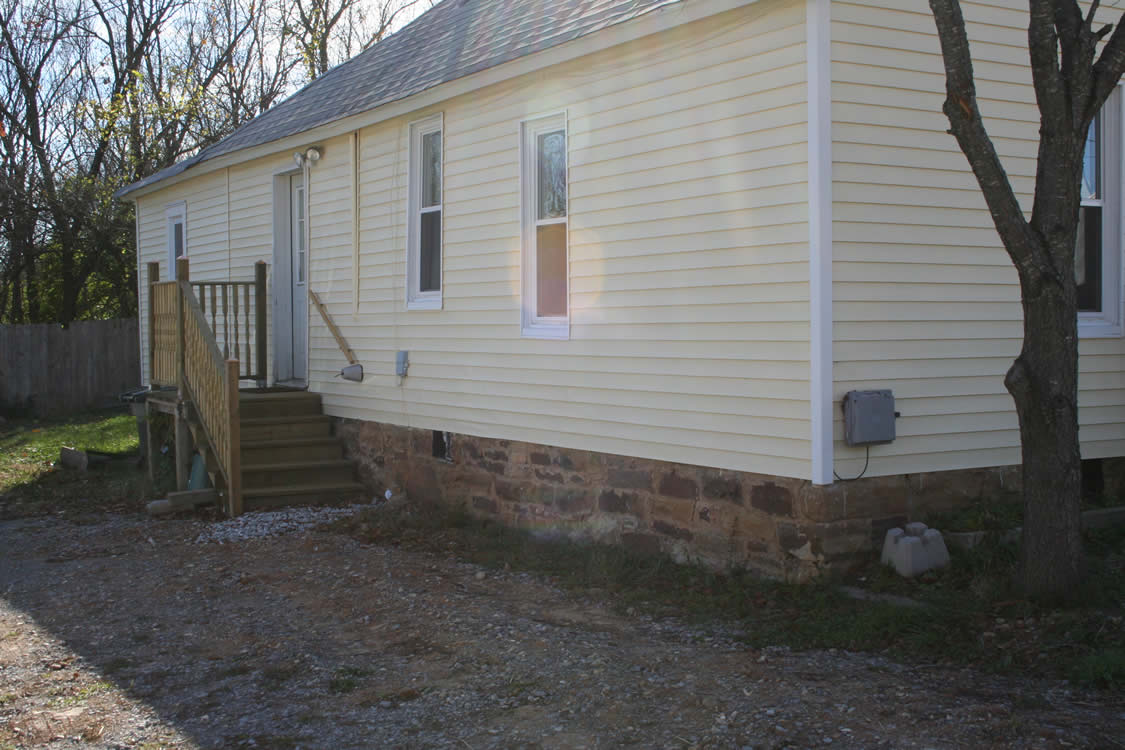

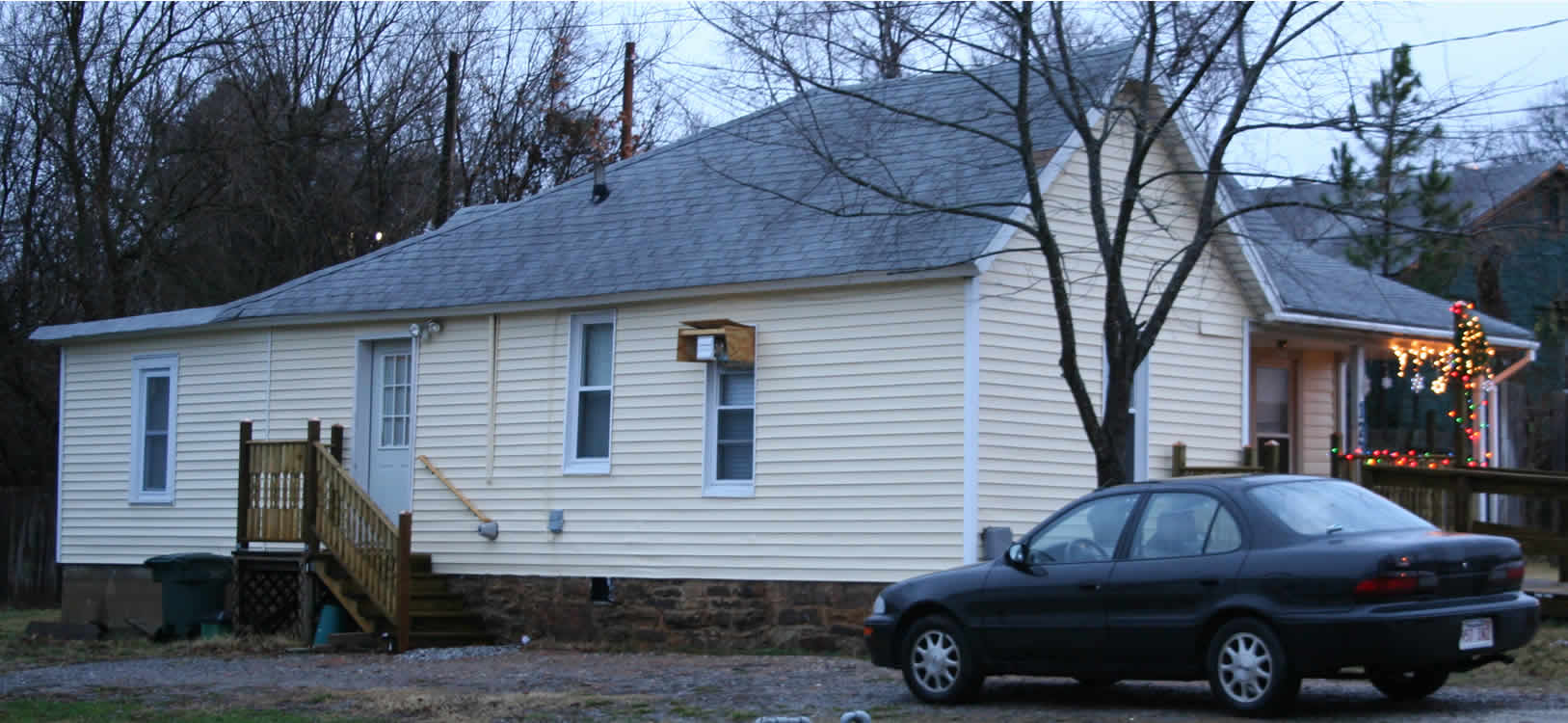
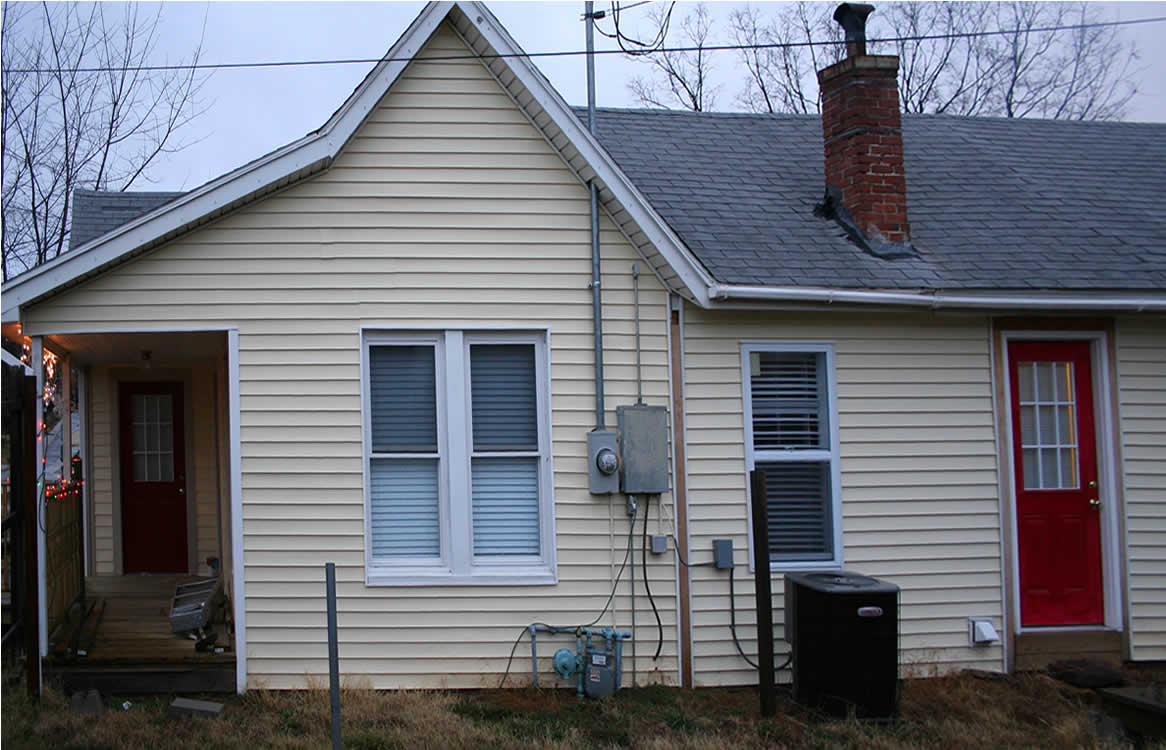
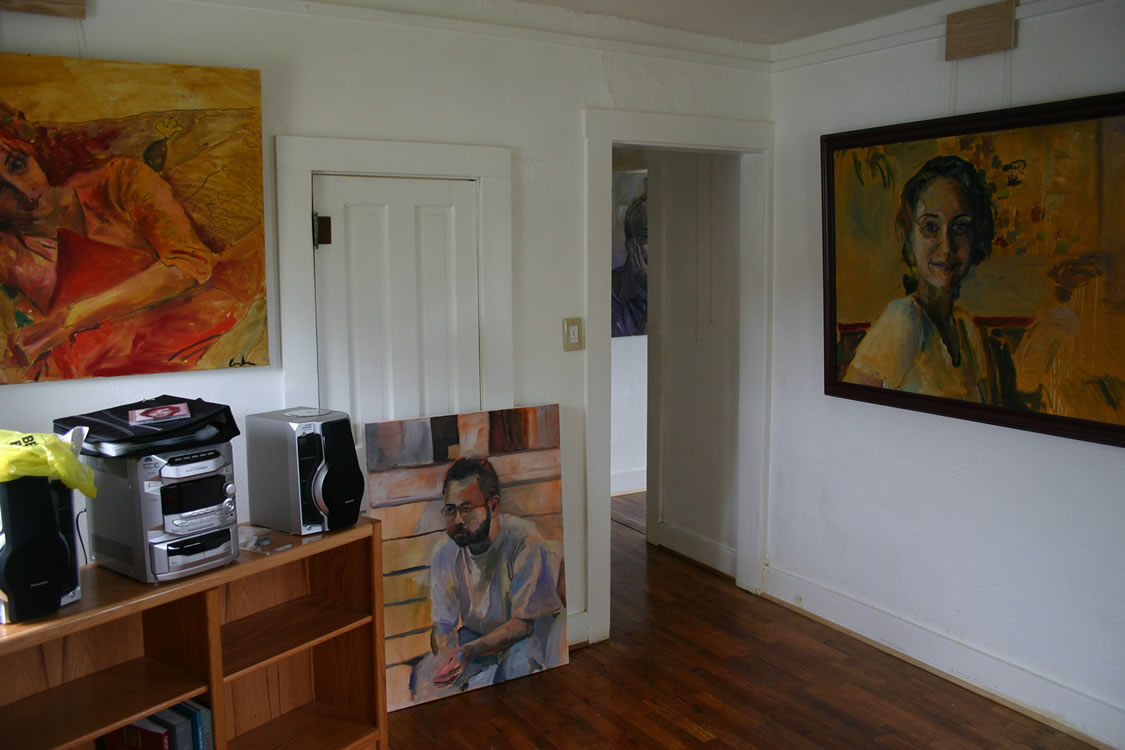
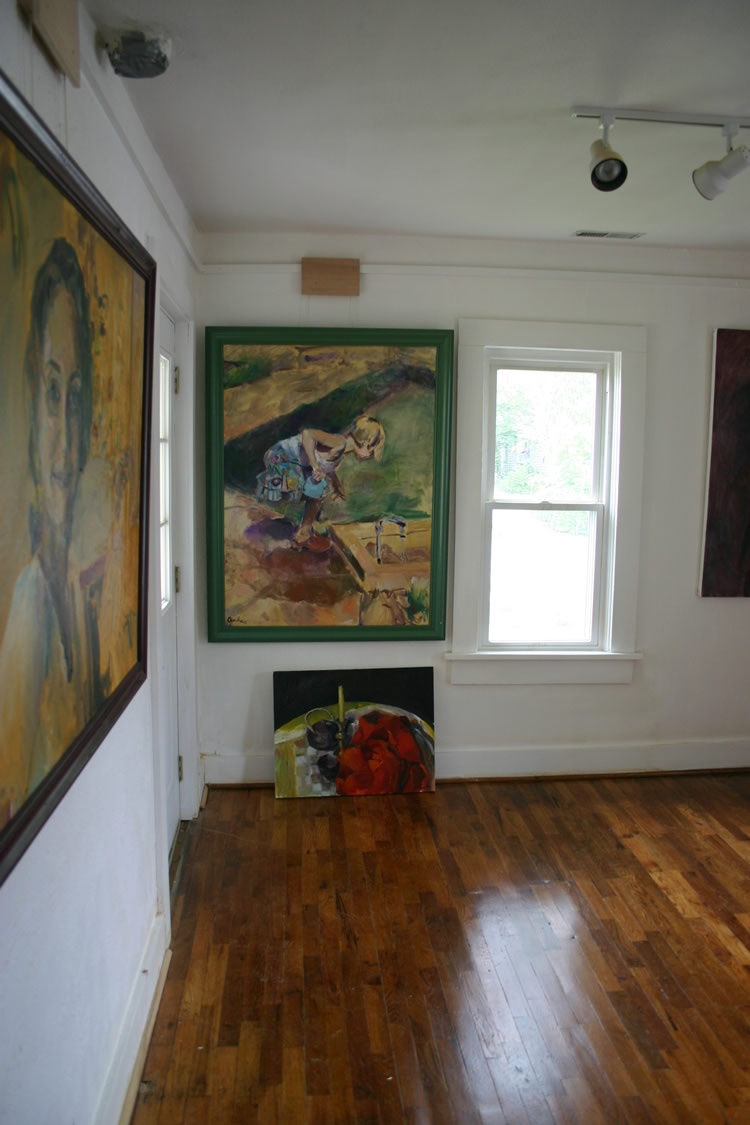
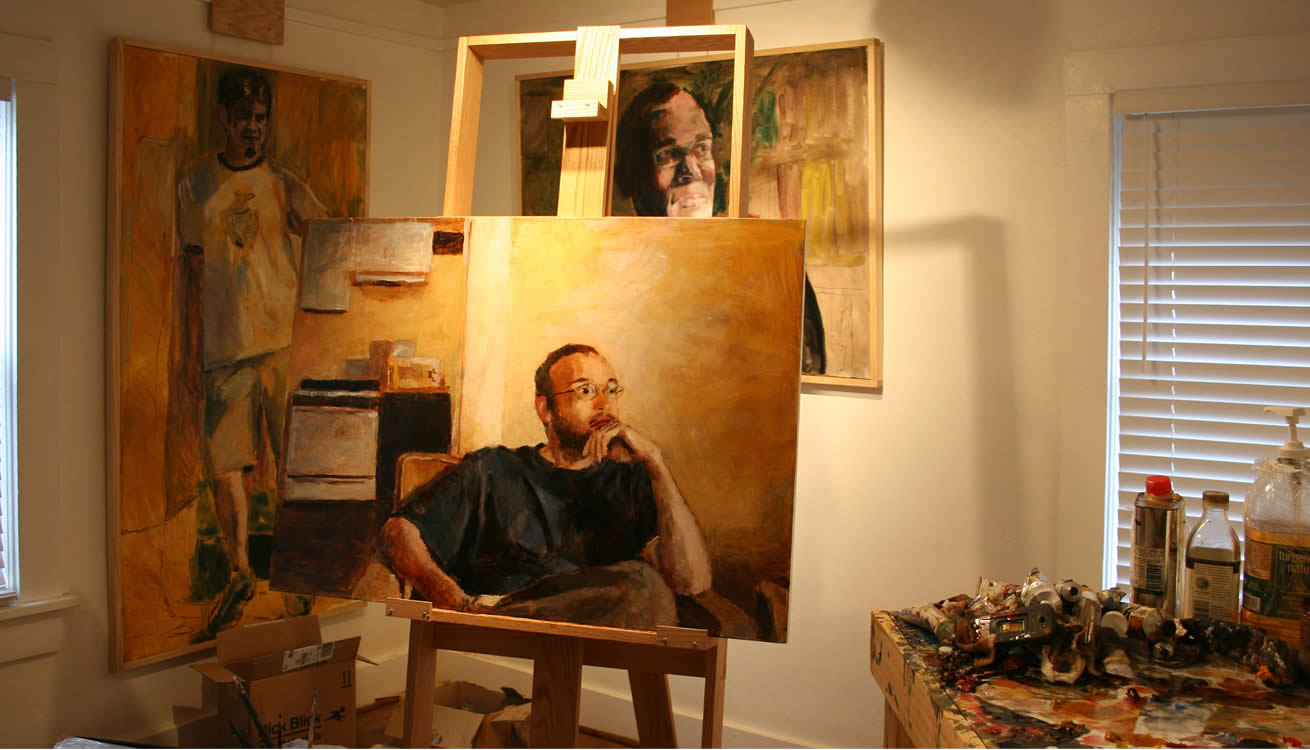 The two pictures above show the room used as studio as it looked when moving in. The picture to the left
shows it when the studio had been set up. It had windows on two sides and a separate entrance from the
front porch, so was likely the living room for one unit when the house was a double. That side of the
house had the original bath, the kitchen, and a bedroom. The other side had a living room, an adjacent
dining room (through the archway) then a kitchen and the later addition of a bedroom and bath to make
the house a double. It is always interesting to realize that much residential housing from late 19th century
through latte 20th century was of this scale. Families lived in 500 to 600 square feet. Big families, too.
The two pictures above show the room used as studio as it looked when moving in. The picture to the left
shows it when the studio had been set up. It had windows on two sides and a separate entrance from the
front porch, so was likely the living room for one unit when the house was a double. That side of the
house had the original bath, the kitchen, and a bedroom. The other side had a living room, an adjacent
dining room (through the archway) then a kitchen and the later addition of a bedroom and bath to make
the house a double. It is always interesting to realize that much residential housing from late 19th century
through latte 20th century was of this scale. Families lived in 500 to 600 square feet. Big families, too.
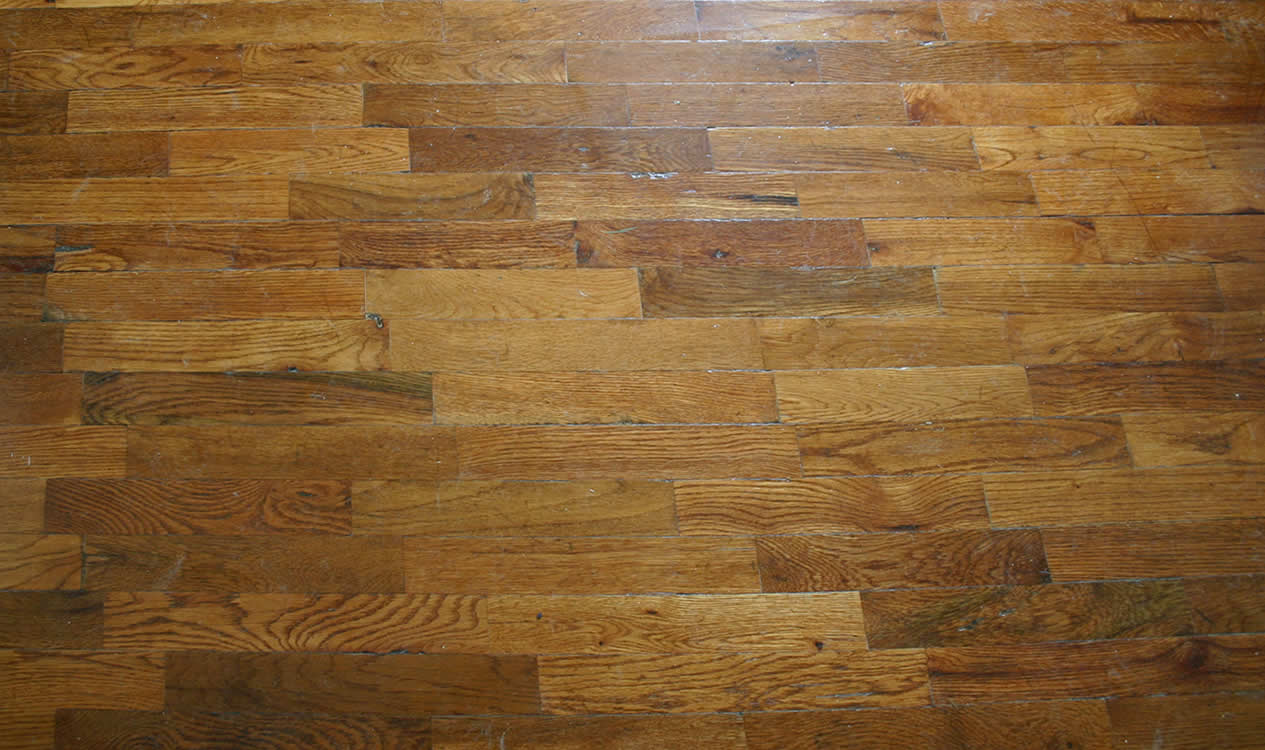 This is a picture of the oak flooring throughout most of the house. What became the living room, dining room,
and front room (studio) all had oak flooring, as well as kitchen, one bathroom, and the back bedroom/den. Only
the large back bedroom and bath had plywood flooring, which we covered with vinyl in wood grain pattern.
This is a picture of the oak flooring throughout most of the house. What became the living room, dining room,
and front room (studio) all had oak flooring, as well as kitchen, one bathroom, and the back bedroom/den. Only
the large back bedroom and bath had plywood flooring, which we covered with vinyl in wood grain pattern.
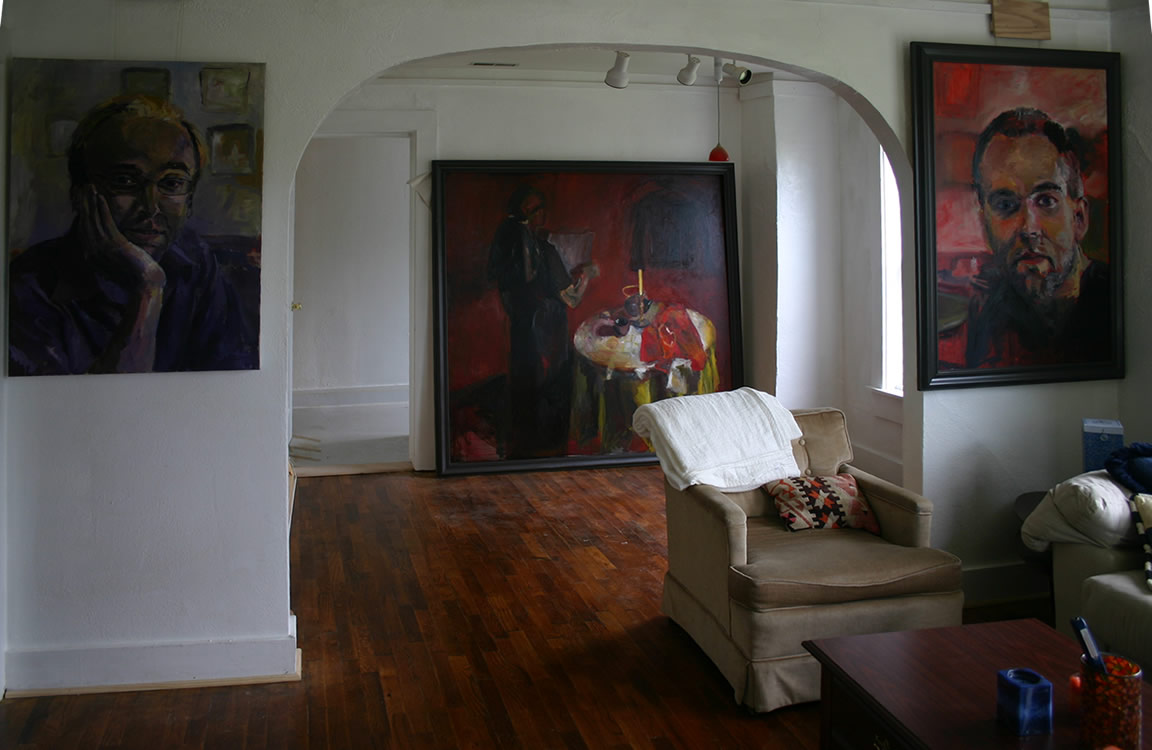
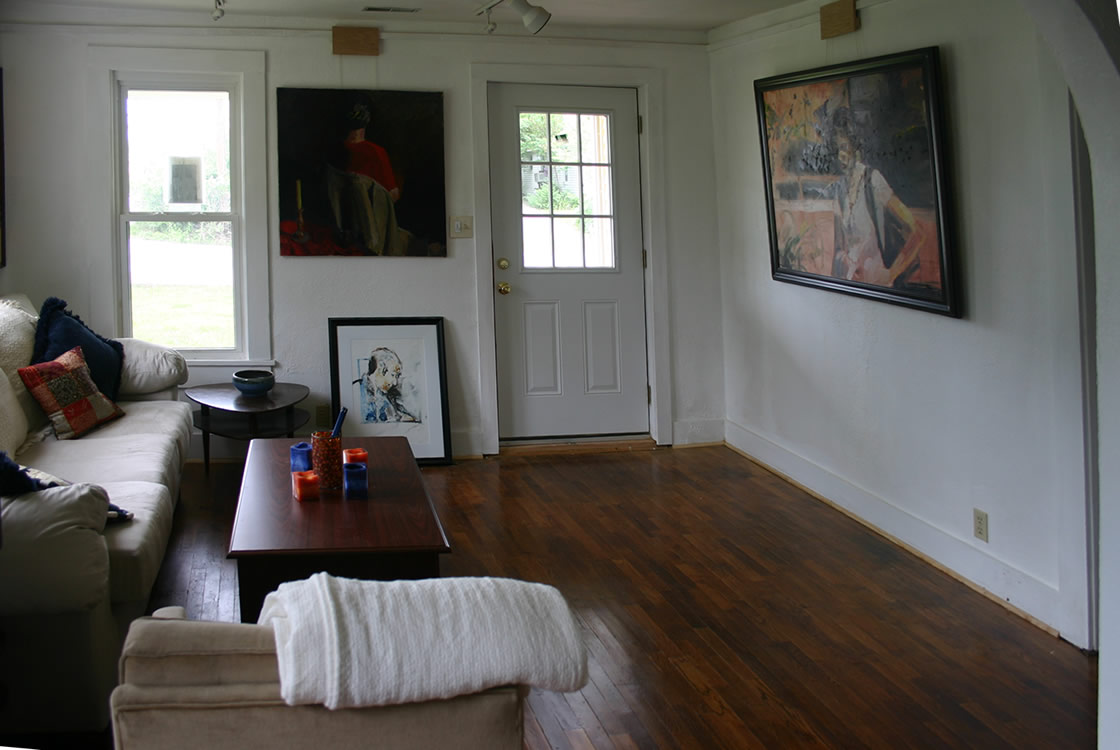
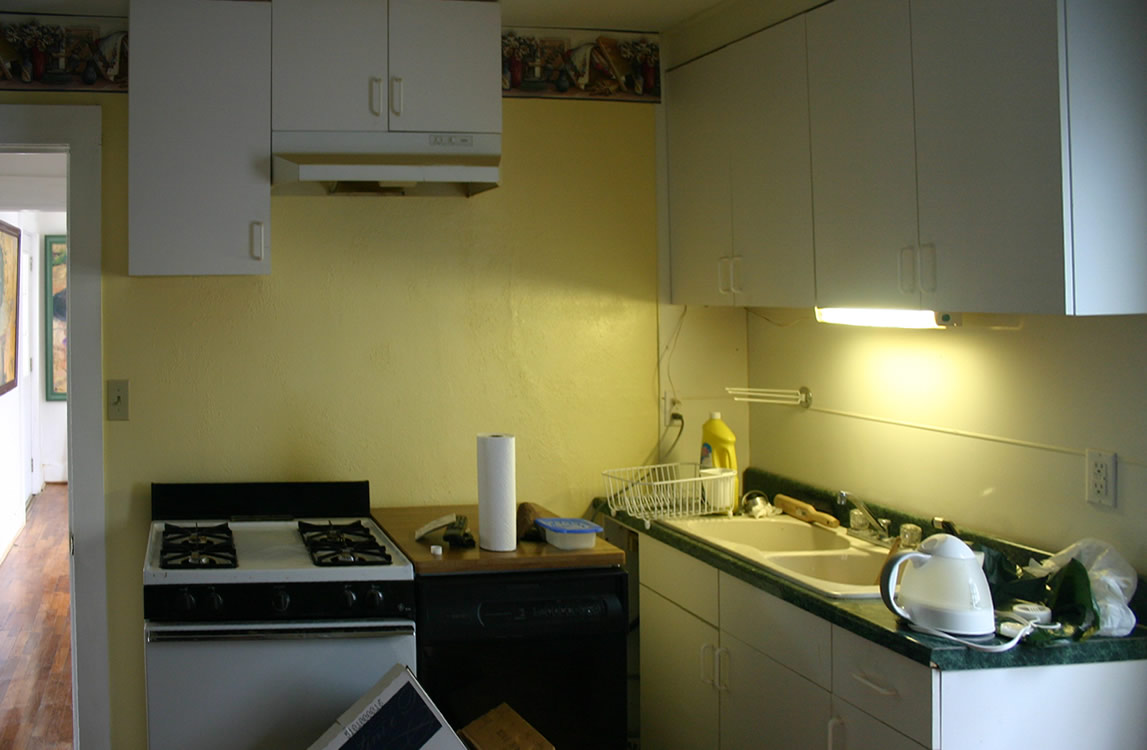
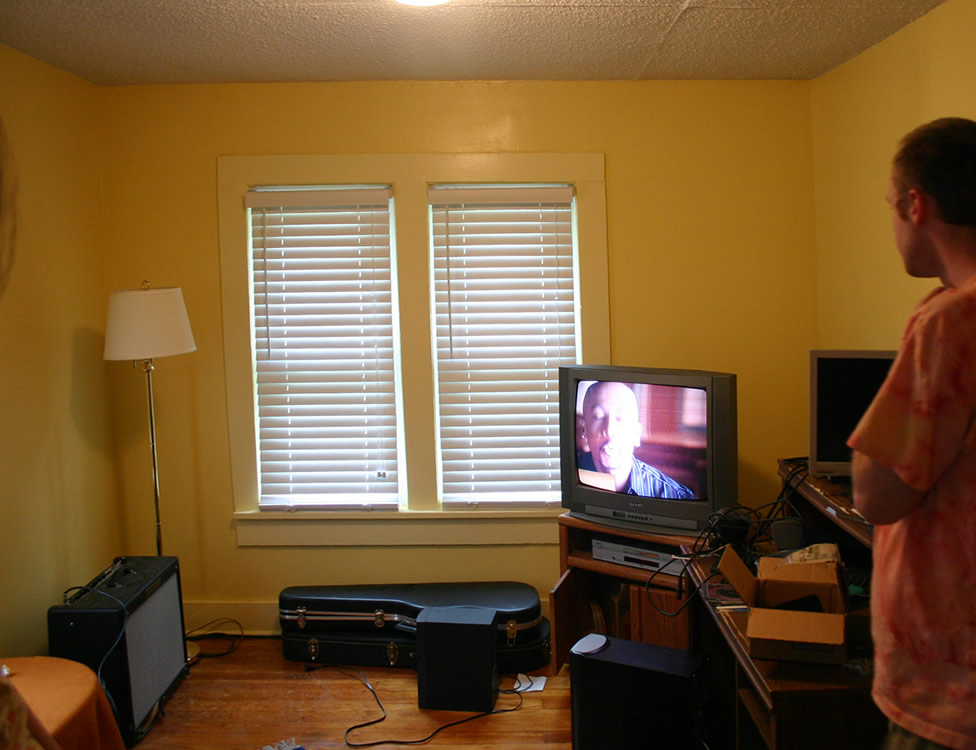
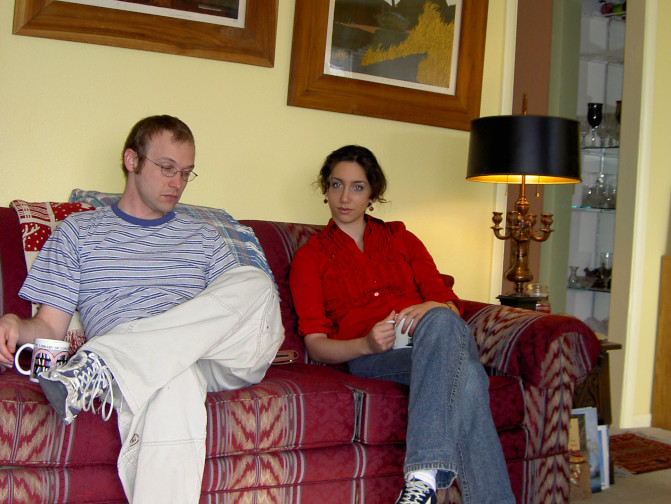
We gradually got to know many younger folks through our sons Rob and Tom, who both spent some time there. For a time we even had a small art gallery there, staffed by ourselves and friends.
After we moved to New Orleans in 2016, we began attending "readings" here, and in 2017, volunteered at the first Annual New Orleans Poetry Fest. At the "Fest" we see again many friends from Fayetteville days. More about that later.
Our gallery was doing pretty well. Not well enough to be an income, but no longer entirely a losing
proposition. As part of our involvement in the visual arts in Fayetteville, however, we had helped to organize
and start a not for profit art collective located on the Square. The entity did not stay true to original
concept,however, and soon was little more than a subsidized gallery for the members of the group, making it
tough for other galleries to compete, particularly as the cooperative solicited and received donations to defray
expenses.
In addition, we felt that the visual artists in Fayetteville seemed not very supportive of each other. Although
it was certainly true that the market for art was fairly small in the area, we wanted to work collectively
to increase the market rather than foster competition among artists for the existing small market. So we began
to think about relocating to some place with and existing art "scene" and liberal politics.
In 2009, while on a "road trip" through the southwest out to California, we visited for a time in Santa Fe,
New Mexico, and ended up with a house there by the end of that year. We liked the city, which had around 300
art galleries, ten museums, a chamber music festival, a symphony, and the Santa Fe Opera. The house there was
a small town house and we planned to spend holidays and part of each summer there. Because my job involved
a great deal of travel, I was able to also get there off and on during the times between. We moved most of our
furniture and household goods there and started to downsize our Fayetteville home to sell it in preparation for
a move to Santa Fe in 4 to 5 years. We ended up selling the house in 2010 and moved to a rental apartment in
Rogers.
However, in one of the annual major reorganizatons of the company Gene was working for, he was re-assigned to a
new territory. The new territory did not include Arkansas but did include New Mexico. And also included the
requirement that he live "in territory". Because it was known that we already had a second home in New Mexico
there was not financial assistance with the move. We found out on December 16th that Gene's new assignment
began on January 1st of 2011. It was a very busy Christmas season, for sure.
So we relocated to Santa Fe, New Mexico, a city with an already thriving art "scene", albeit one that was
still contracting after the 2008 Bush recession. We decided that we would go there, where art was an industry
rather than wait for the arts to develop in Fayetteville.
The pictures below are one office building in Fayetteville by Fay Jones and of Thorncrowne Chapel. Also near to Fayetteville is the Mildred Cooper Chapel in Bella Vista, AR. In Hot Springs, Arkansas, is the much larger Anthony Chapel built by Jones' partner, Maurice Jennings.
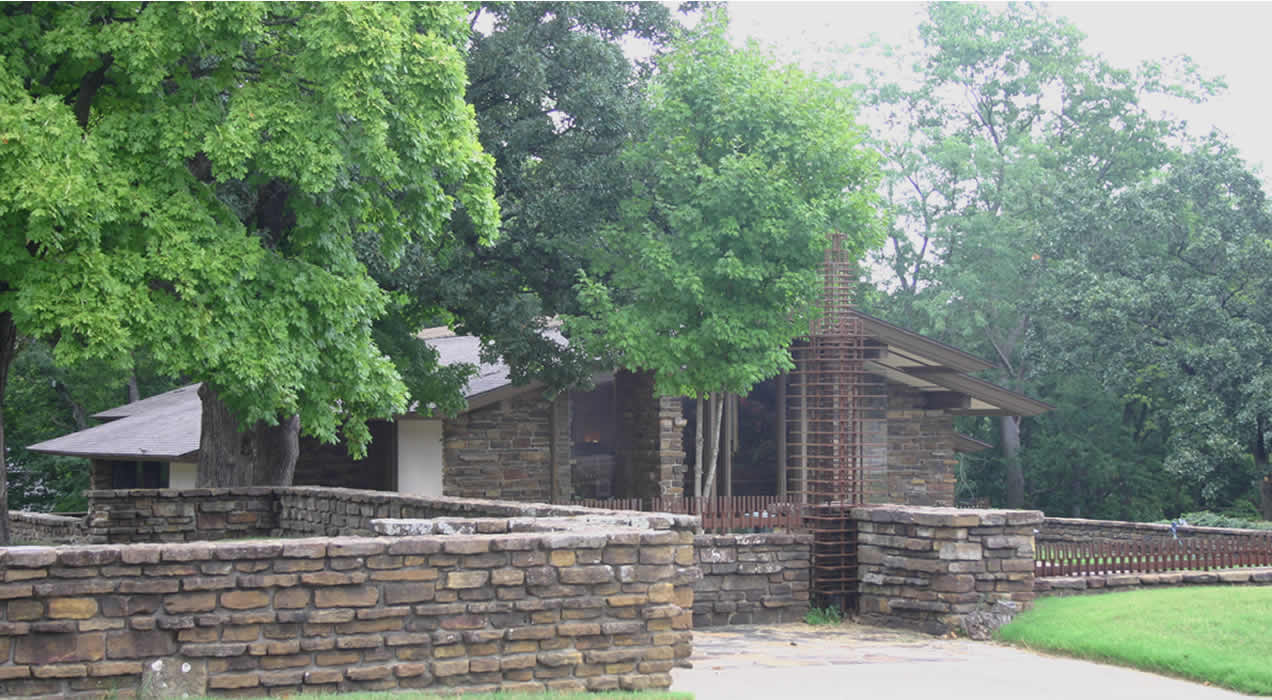
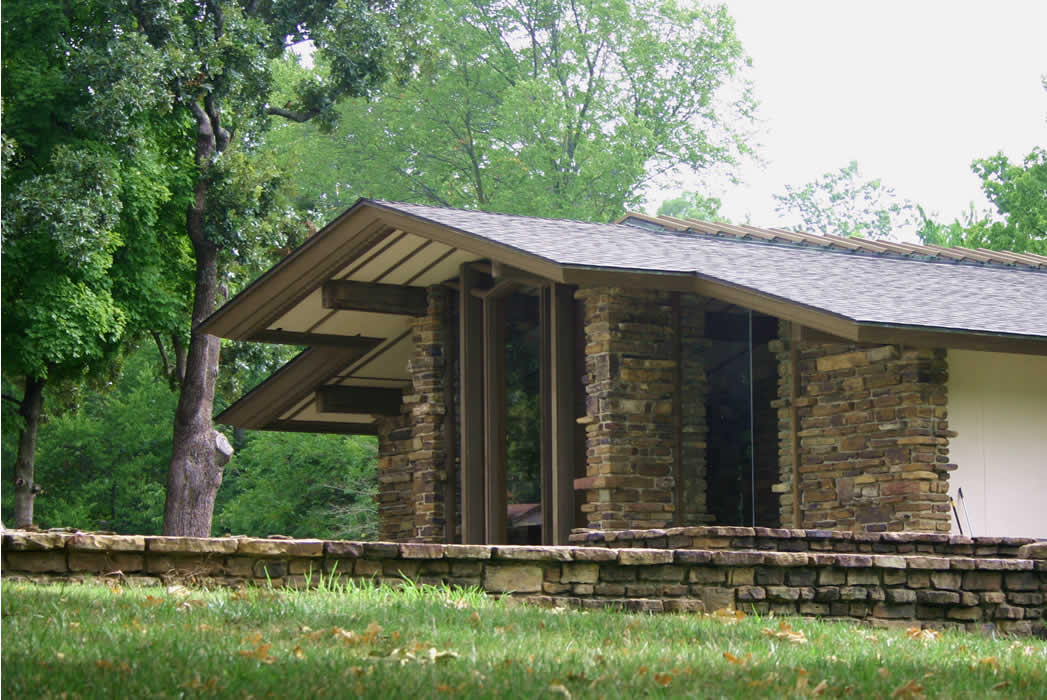
This building was built as a medical office for Anthony DePalma in 1963. It was restored in 2001 by Maurice Jennings' firm and was a business office when we lived in Fayetteville.


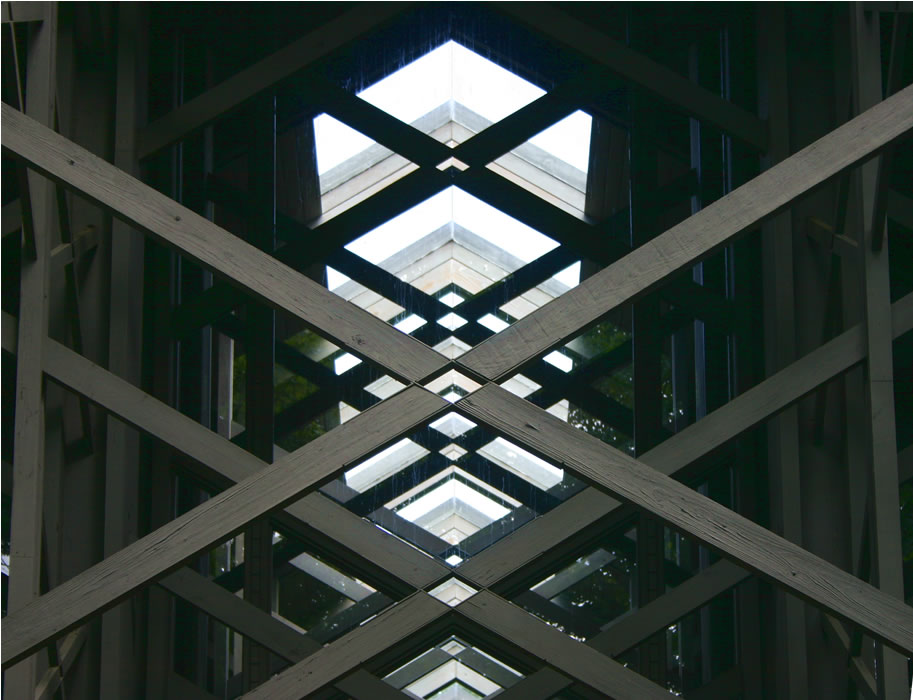



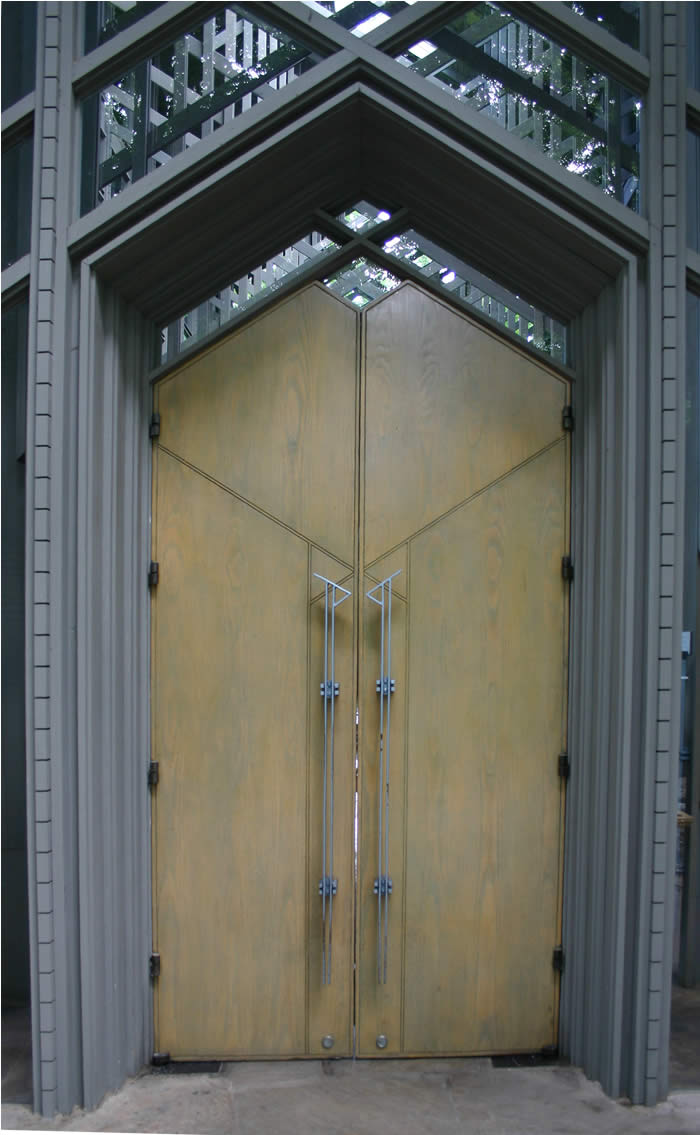

Jones also, as Wright, designed furniture and hardware and lamps for his buildings.
While we lived in Fayetteville, we had plenty of good times and discovered many interesting things about the area and great places to visit. There was the annual "Bikes, Blues, and BBQ" festival in late September, which was fun and interesting at first experience, but did not maintain interest or excitement on repeat visits. There are only so many customized motorcycles, costumed Harley riders, and Confederate flag trinkets one can view before becoming bored. And it was noisy.
Some photos of the rally and downtown Dickson Street through the years 2004 - 1010.
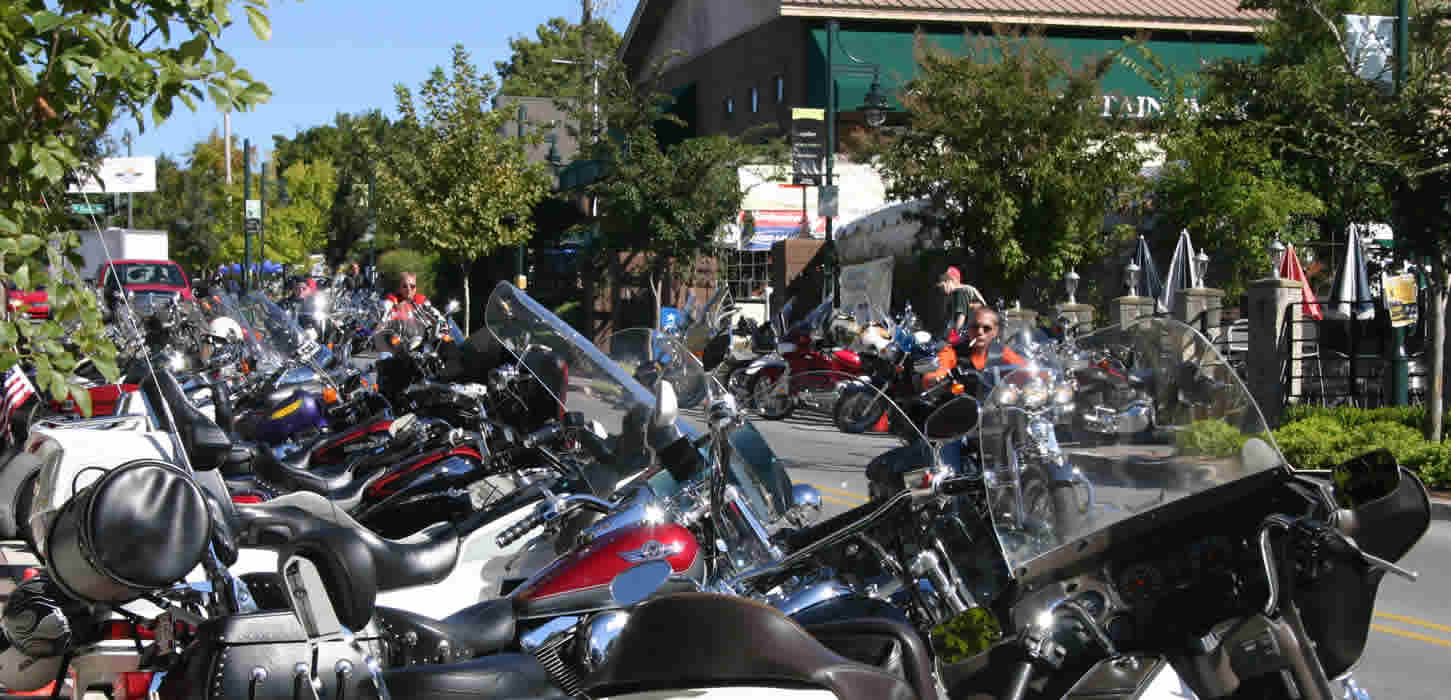
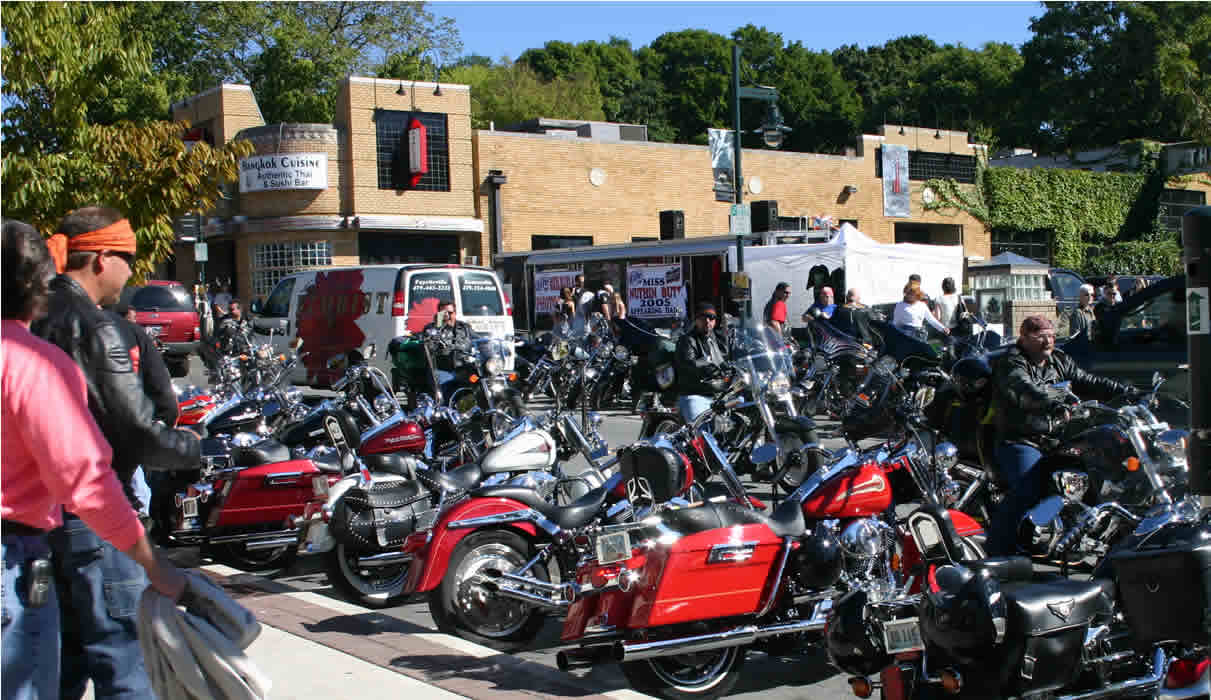
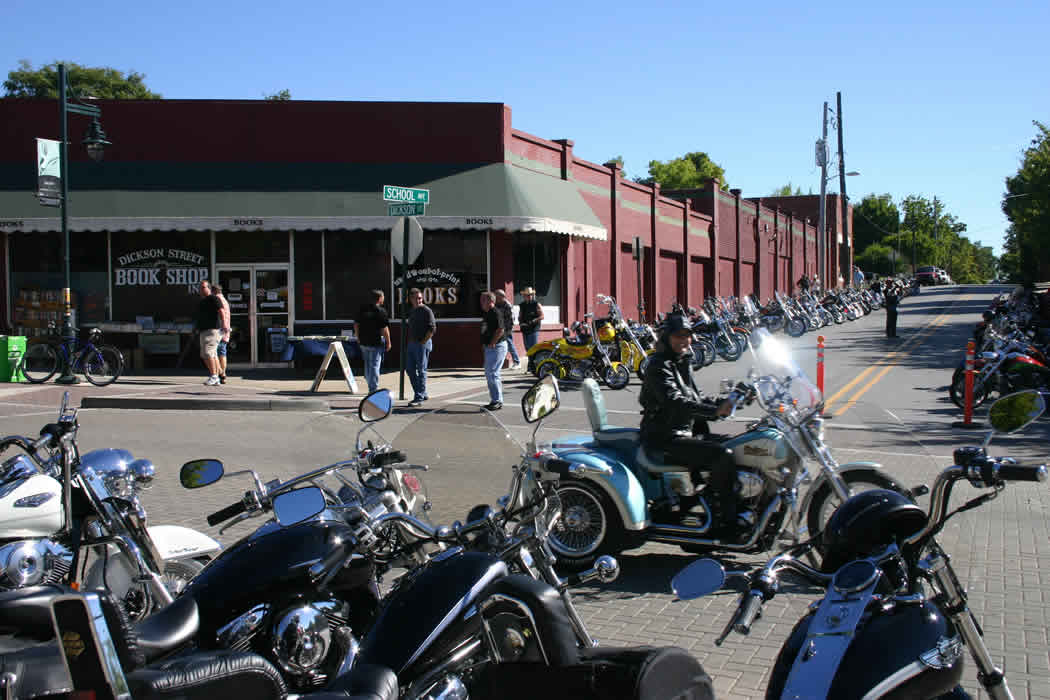
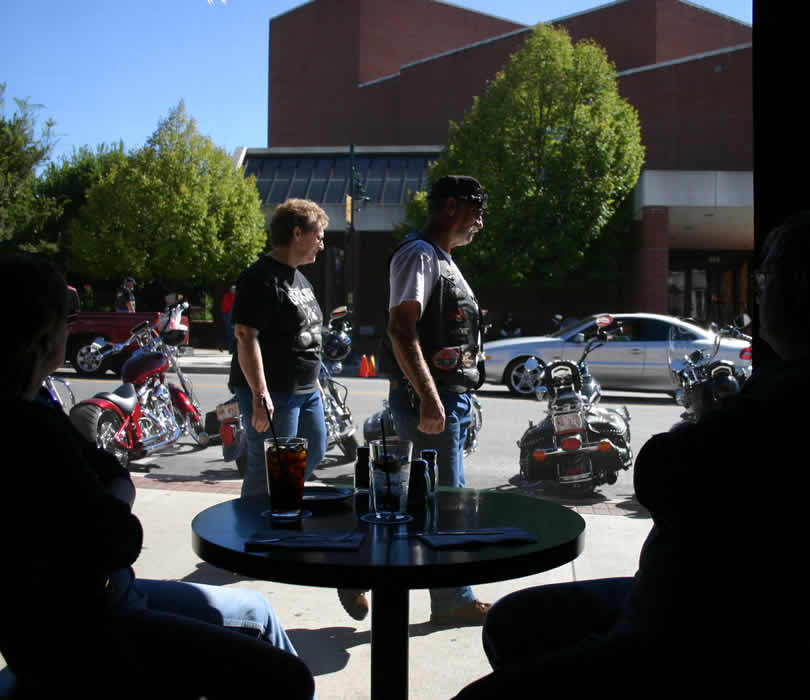
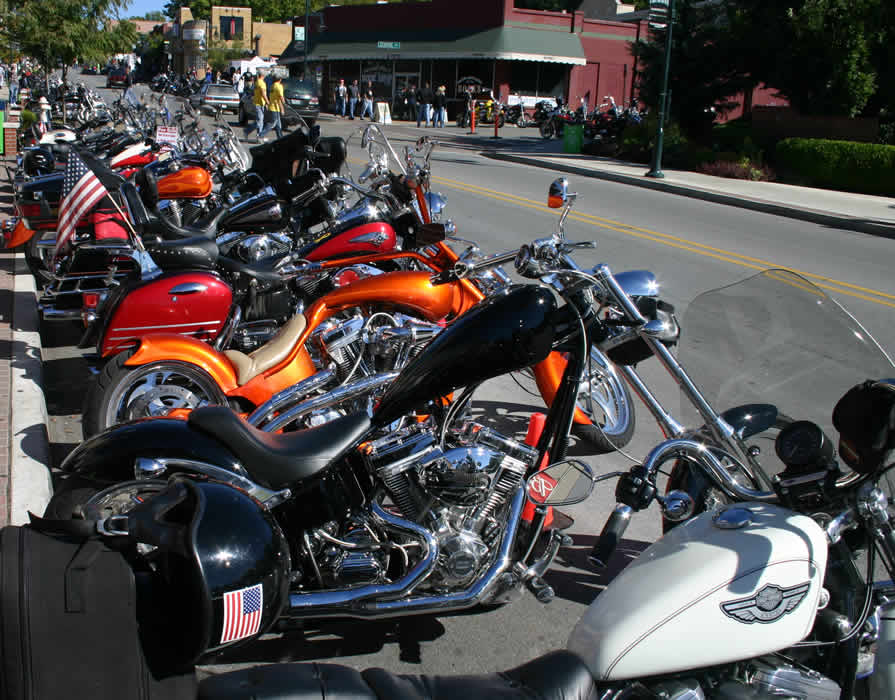

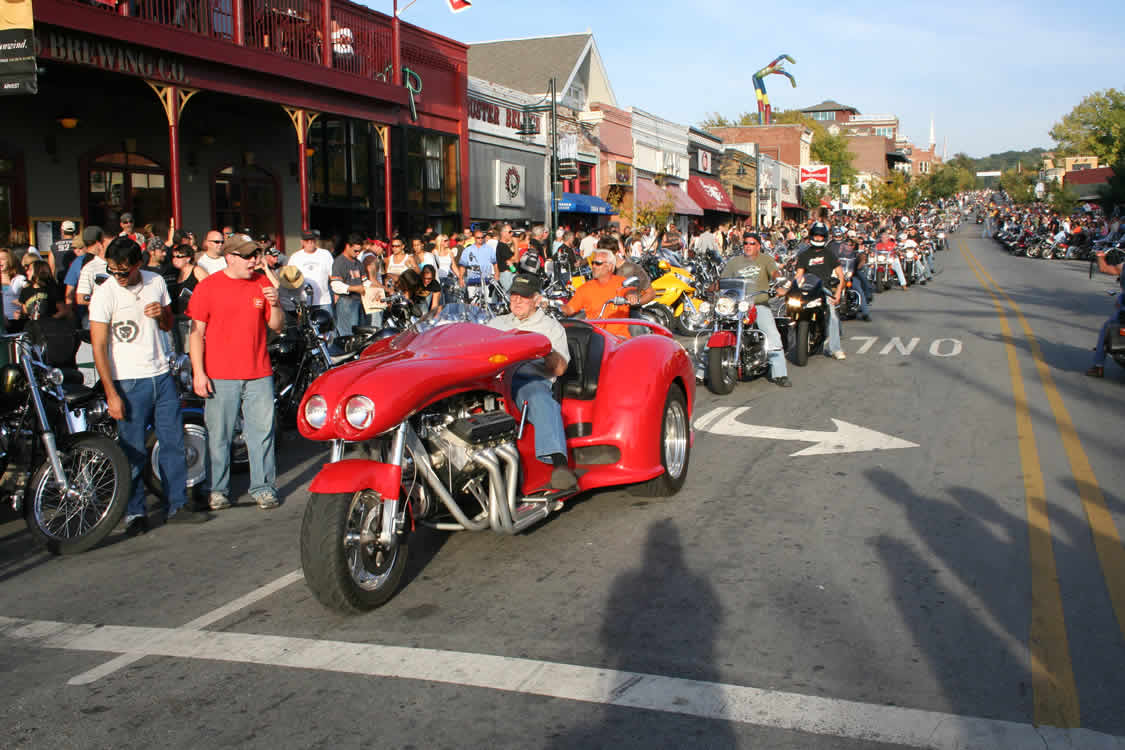

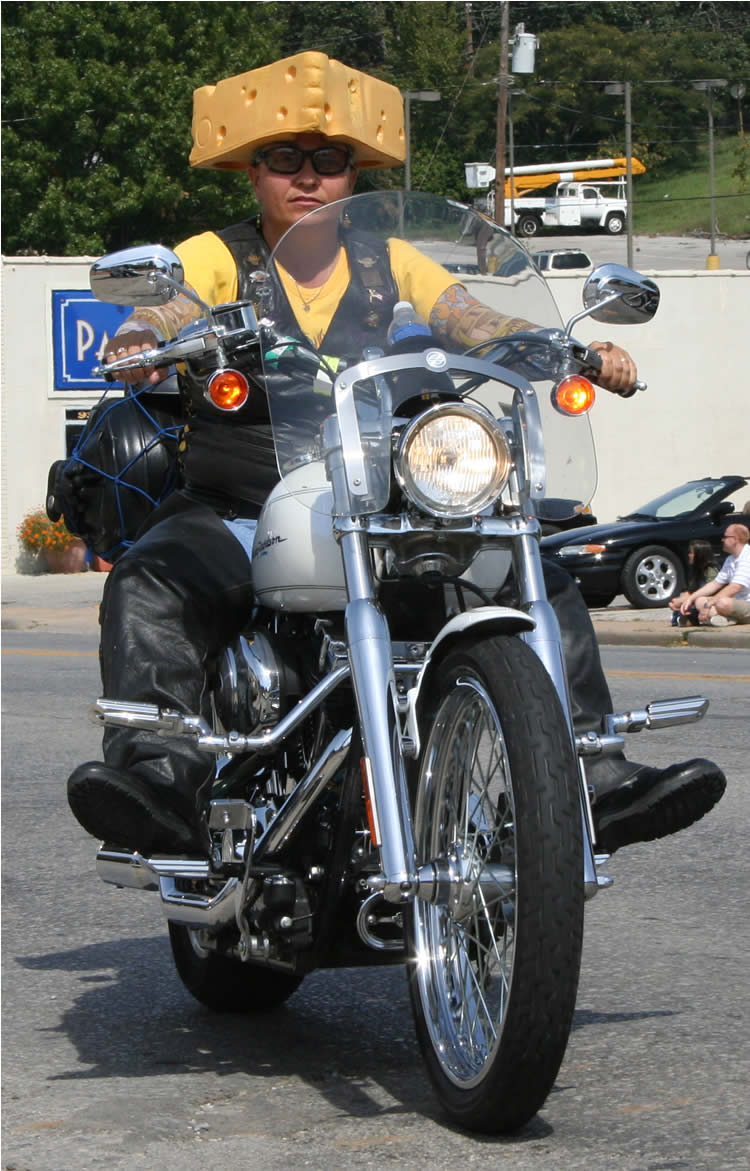
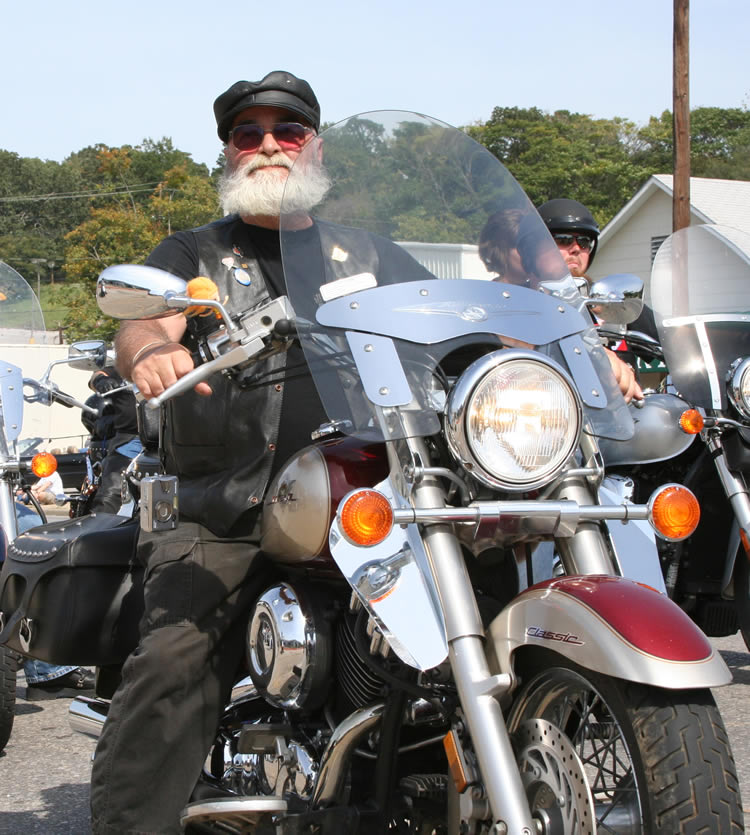
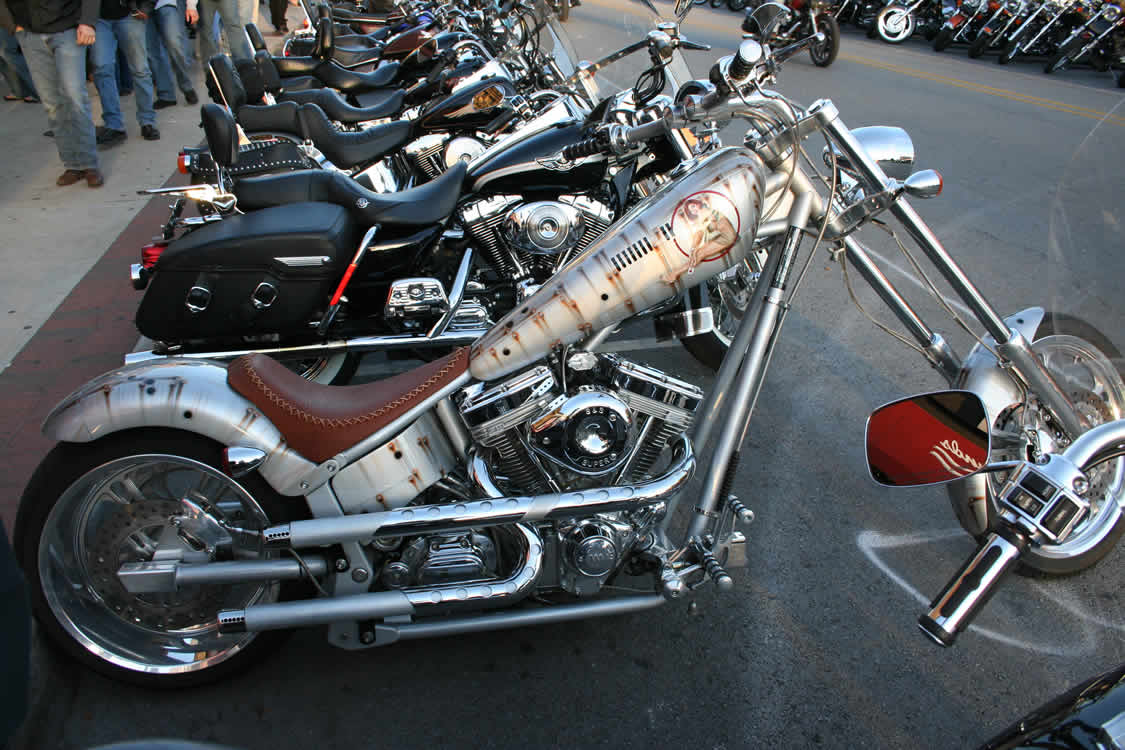
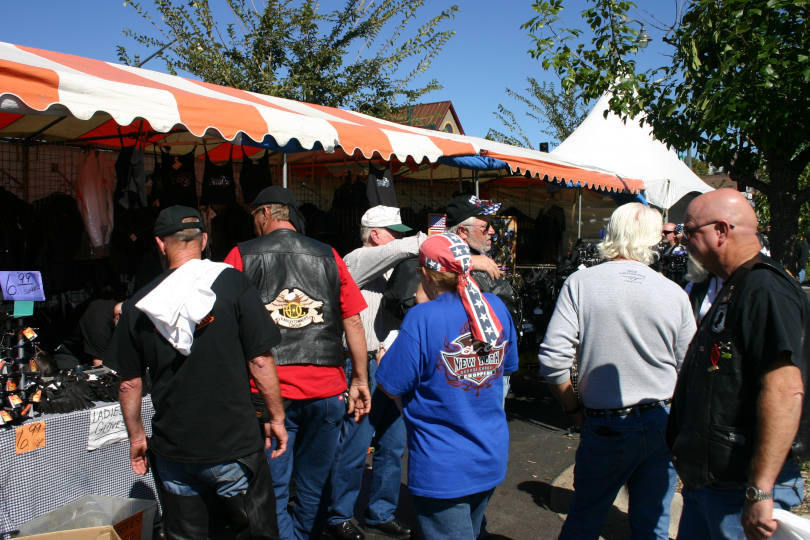
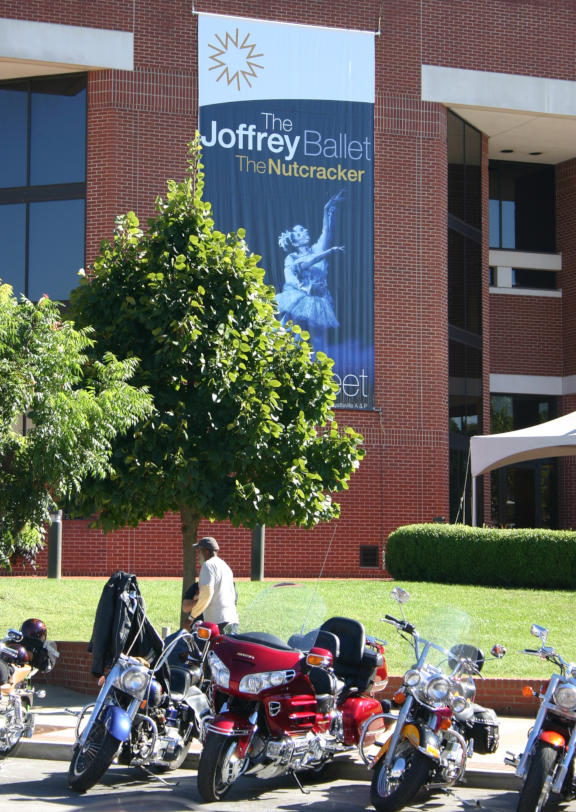

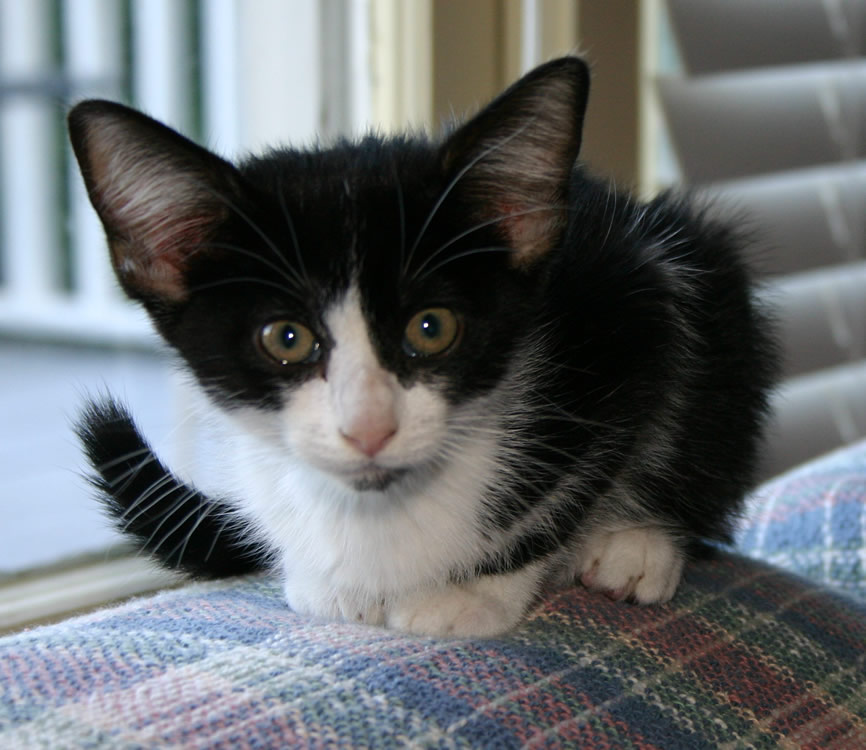
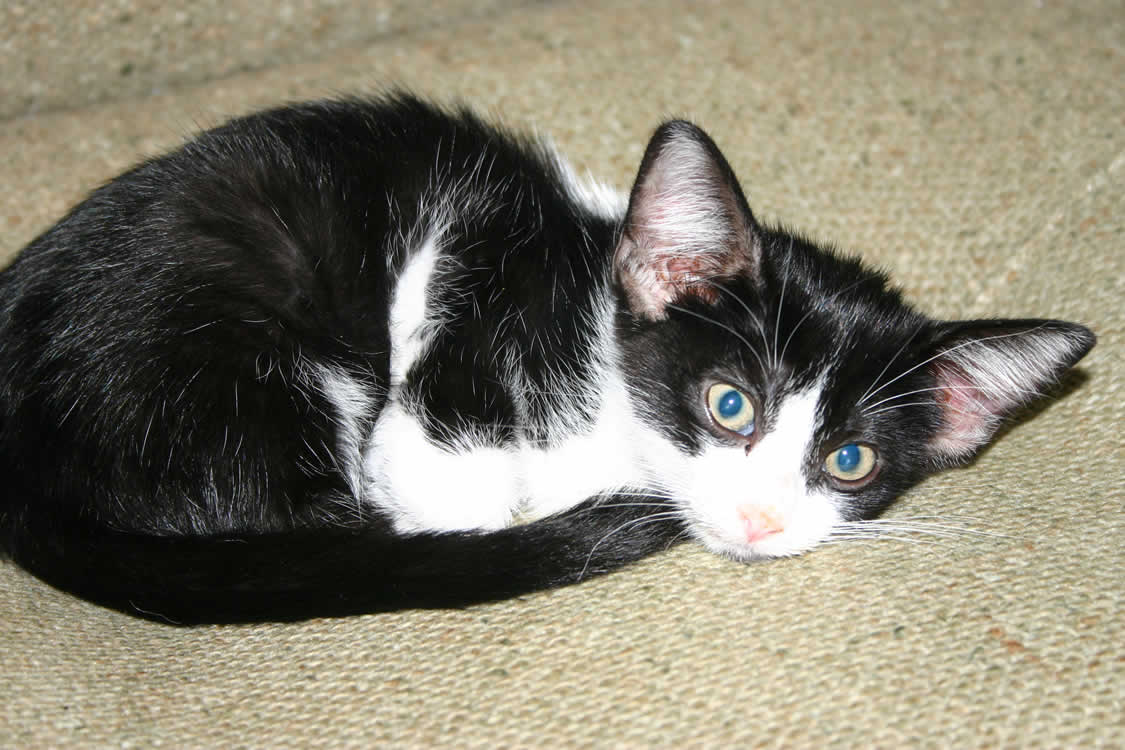
This is Book. The second of our cats by that name. The first came to us when we lived in
Petersburg, VA. That Book was one of a litter of feral kittens born under the shrubbery at
the front of the library at Richard Bland College, where Ellen worked. A security guard
fed the kittens and found homes for them among library staff. The name reflected the cat's
origin, the library. That Book remained pretty much feral and lived outside at our home
in Petersburg. We had to give up the cat when we moved to California and placed it through
an adoption program shortly before we left.
This second volume also came through a library connection, but was not a feral animal. She
was as tiny as she looks in the picture and never weighed more than ten pounds when fully
grown. She was a quirky cat, if that is not redundant, and loved to watch birds through the
living room window. We did allow her out part time, but she did not do well as an outside
cat, as she tended to wander off, to snatch songbirds in the air, and explore the nooks and
crannies in our terrace walls. None of these were good behavours, and the latter one resulted
in a trip to the veternarian for a snake bite. So she ended up an indoor cat.
More of her adventures in next installments.
